When it comes to extolling Bristol’s merits, I honestly don’t know where to start.
With the arguably best street art in the world? Yes, but that’s too obvious.
Or rather with the fact that the city has a vibrant music scene and some of the coolest bands come from Bristol? Sure, the relaxed and at the same time energetic flow of trip-hop perfectly reflects the city’s laid-back atmosphere, after all.
Or is it the absolutely overwhelming food culture?
Maybe the fact that Bristol was Britain’s first cycling city?
Bristol’s history? The amazing architecture? The openness and warmth of the Bristolians?
Oh man, no matter what you pick, Bristol makes it impossible not to fall in love with the city.
So come and join me in the search for the things that make Bristol the best weekend break you’ll have in a long time.
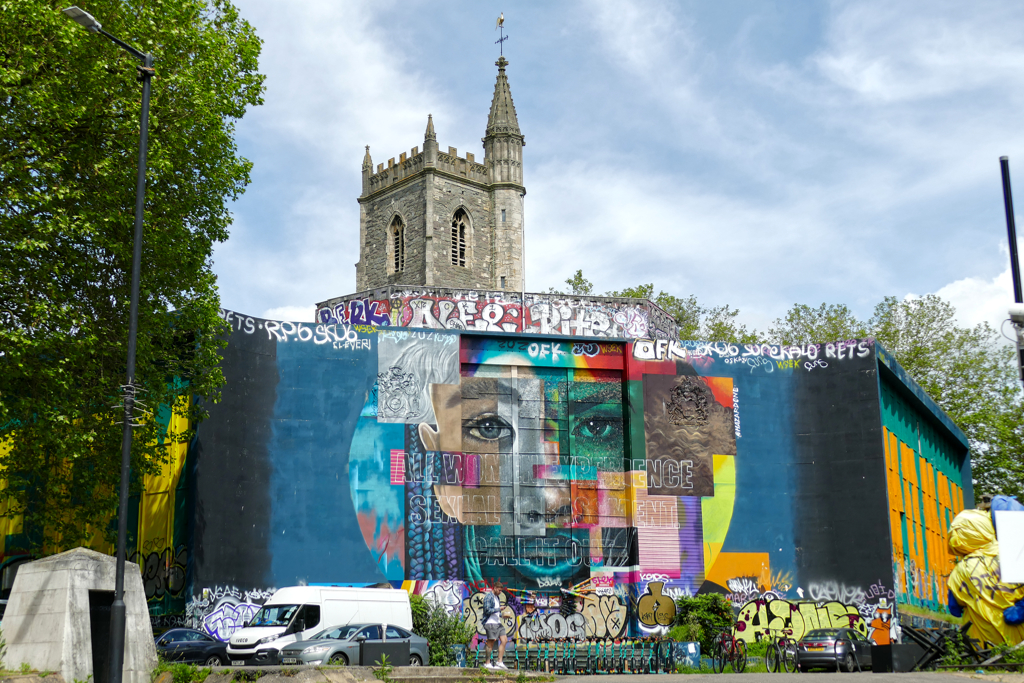
Bristol – Great Britain’s Mild Mild West
“We spent a couple of days in the Cotswolds”, tells Sara over some complimentary drinks the hotel treated us to as we have to wait for our rooms. “So you were actually in Bristol? You’re not just flying from their airport? But what is there to do in Bristol?”
The wait is not the hotel’s fault. A fully booked flight to Amsterdam was canceled at concise notice and now everyone has to improvise and make the best of the situation. That’s how I ended up at a hotel bar with Sara and her boyfriend somewhere in the English countryside. If I were here of my own free will, it would be a wonderful place. But for us, it is an emergency shelter. At least a fancy emergency shelter.
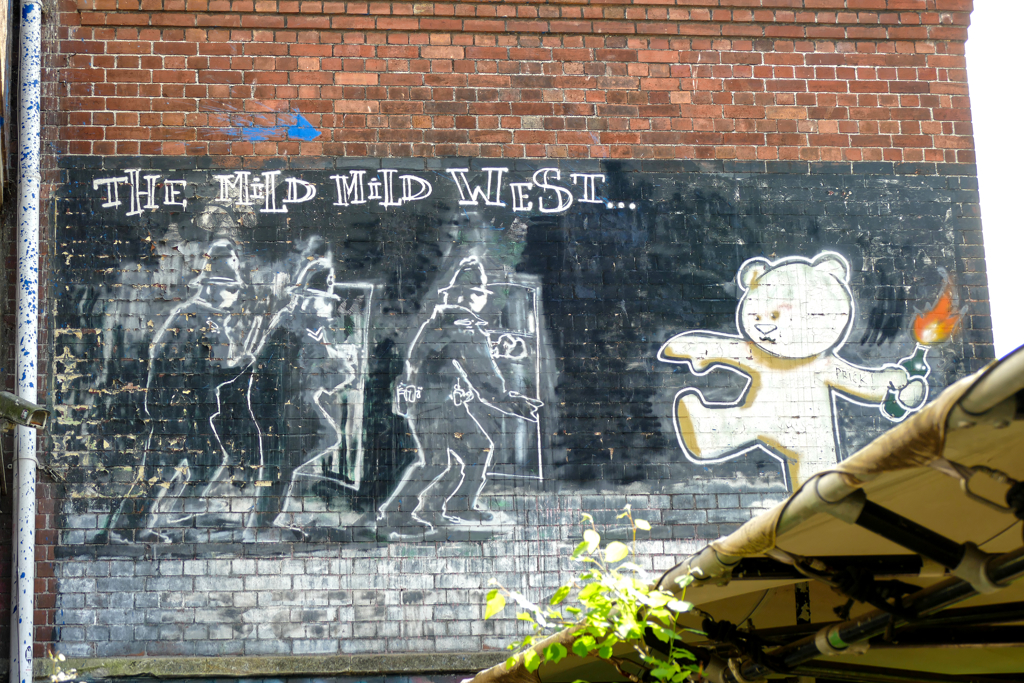
What is there to do in Bristol? Well, as I try to answer Sara’s skeptical question, I realize that there’s a lot that makes Bristol an amazing place, yet not everything can be listed in words. You know, there are those places that you rather perceive. Albeit, there definitely is a lot to see in Bristol, don’t get me wrong. Actually, it is Bristol’s amazing optics that lured me to the city in the first place as it is famous for its outstanding street art.
Unfinished Sympathy
My interest in Bristol goes back a long way to a time when basically every inspirational band seemed to have their roots in Bristol. Let me put it that way: while Banksy became Bristol’s art representative, in the early 1990s, the trip-hop band Massive Attack became the city’s musical ambassador. By the way, this chapter’s headline is an obeisance to their unforgotten first chartbuster.

And the beat goes on: To this date, the city seems to be more attractive to young people than ever. After all, Bristol has been voted one of the most liveable cities for people under 26, apart from London. As for me, the ship with my twenties on board sailed ages ago. Yet the post-hippie in me feels instantly at home. The liberal, almost progressive climate, which is reflected in the environmental awareness, solidarity, and individualism of the residents, can actually only be considered a good thing.
Best Weekend Break in a Long Time
So why haven’t I visited Bristol before? Well, you know how it is: you travel to Berlin a hundred times before you give another German city even the slightest chance. You waste days and money in Paris before taking a trip to another French city. All of these little gems seem to lose their shine next to the polished figureheads. I visited London repeatedly and always considered at least a day trip to Bristol, especially since the train journey takes a maximum of two hours. But when I arrived in Britain’s exciting capital, I was blinded by the city lights and stayed put.
By the way, Bristol is not a one-horse town, either. In fact, it’s the fifth largest city in Great Britain and, not least because it’s a university town, it’s definitely rockin’.
After raving about the city to Sara and you guys, it’s time to detail what I did on my weekend in Bristol, which turned out to be one of the best weekend trips I’ve had in a long time.
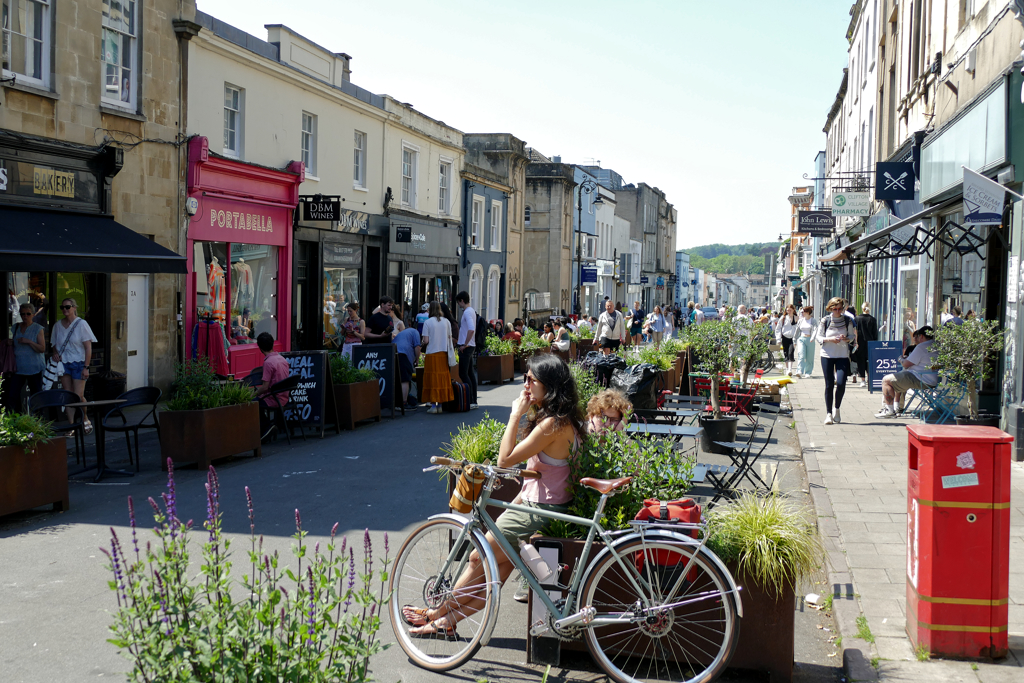
As Bristol is a place that you can immerse yourself in rather than rush from one attraction to another, you can easily unwind while exploring the different parts of the city, see beautiful and unique things, browse small, quirky shops, and enjoy delicacies in cozy, owner-run cafés and restaurants. However, you will also see some sights’n’landmarks along the way.
I’m sure that by Sunday evening, you’ll agree that you had the best weekend trip in a long time!
Around College Green
College Green is the best spot to start your visit to Bristol, and that’s where I met up with Duncan who guided our small group through his hometown. It’s absolutely worth investing a bit over two hours and 12 £ and letting a local guide introduce you to the many marvels and secrets of Bristol that would otherwise remain unnoticed. Because like I said, Bristol doesn’t flex.
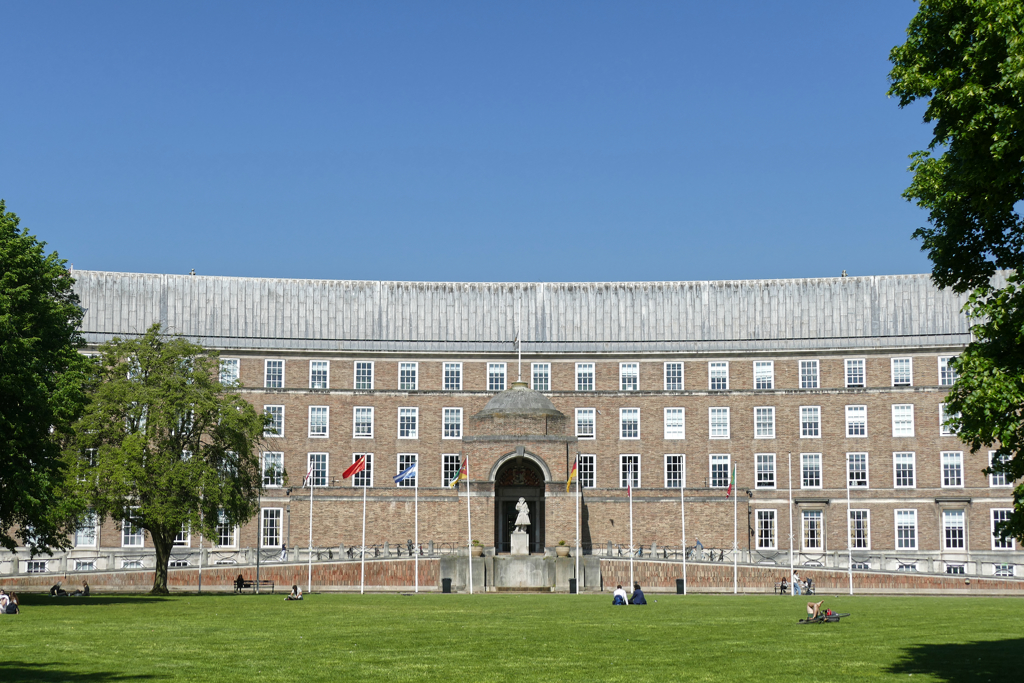
Our group meets at the main entrance to Bristol Cathedral, a structure built in 1140 as St. Augustine’s Abbey. The cathedral is particularly interesting because of its unique architectural features and historic organ. But a visit isn’t on the agenda now, yet, I’ll always have time for that later.
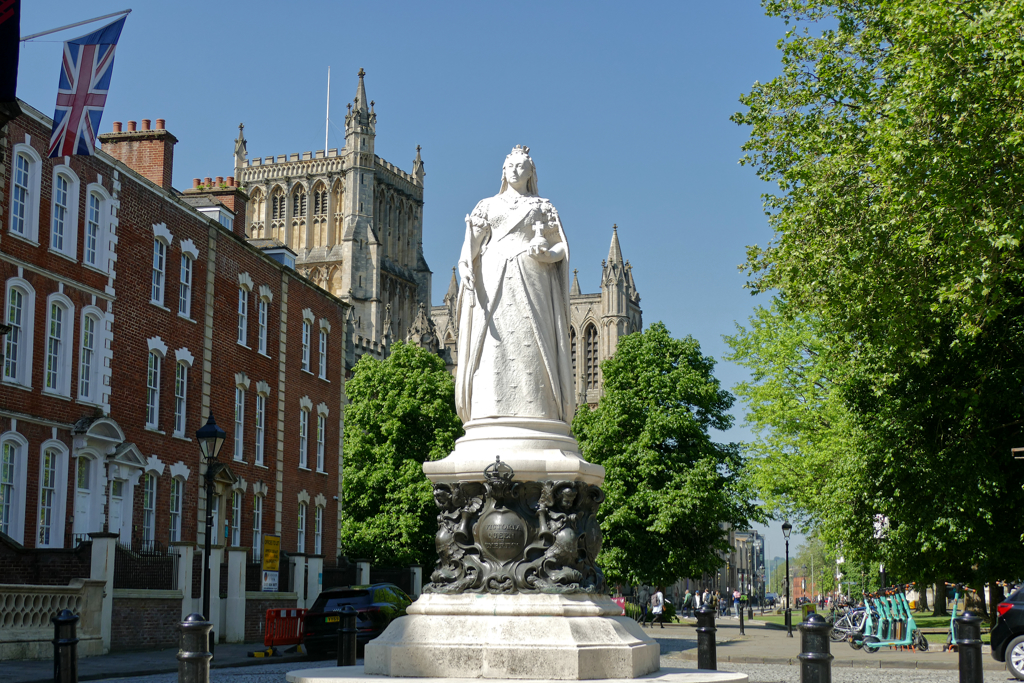
While our guide Duncan showers us with information and anecdotes, we stroll to the city hall on the west side of College Green. It is an imposing semi-circular building in the neo-Georgian style with quirky gilded unicorns on top of the end pavilions. Interestingly, unicorns have been one of Bristol’s trademarks since the 17th century. According to the city’s coat of arms, they stand for Virtute et Industria, hence, virtue and hard work.
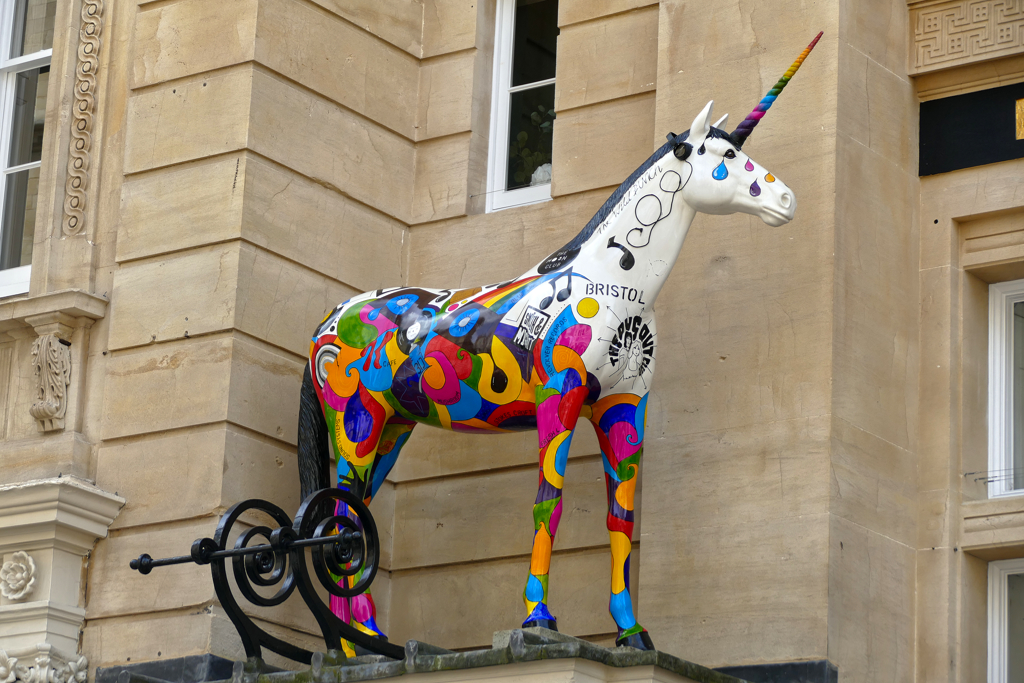
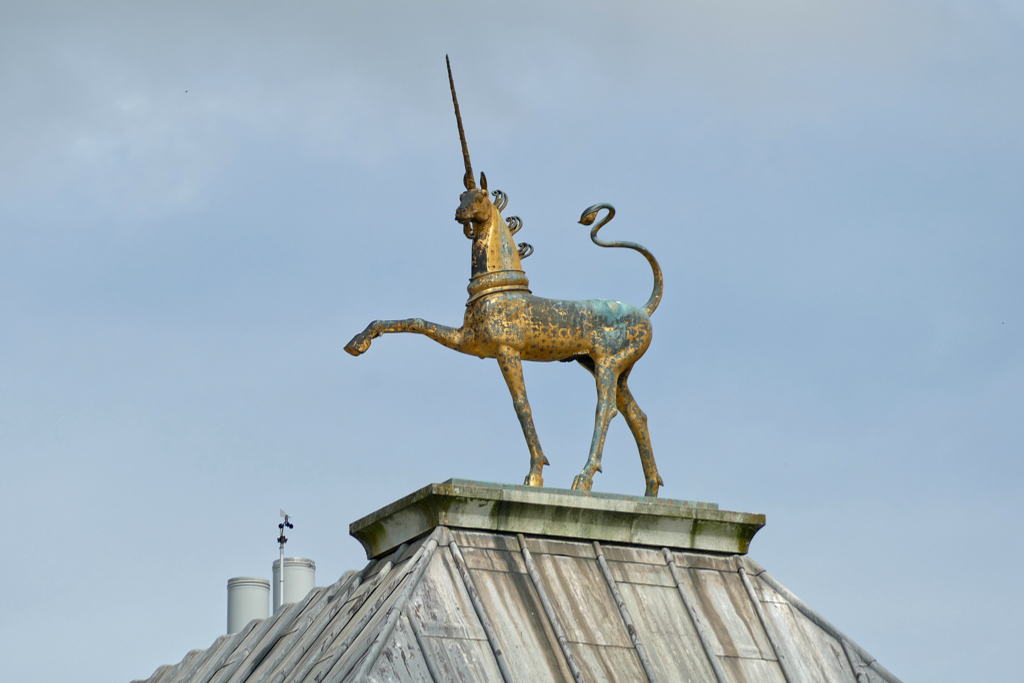
For me, however, they represent fantasy, faith, and a bit of craziness – and are therefore a perfect fit for Bristol. On the occasion of the city’s 650th anniversary, there was even a so-called Unicorn Festival. For this purpose, 40 artists created 60 unicorn sculptures that were exhibited in public spaces.
The Cradle of Urban Art
Art in public spaces – that’s probably the first thing that comes to mind when the city’s name is mentioned. From a tourist perspective, urban art is the city’s biggest asset. And so our group crosses the street and stands in front of the work of one of the city’s most famous sons. But unfortunately, Banksy’s The Well Hung Lover is in a rather dilapidated condition today – vandals have defaced the work with bags of paint.
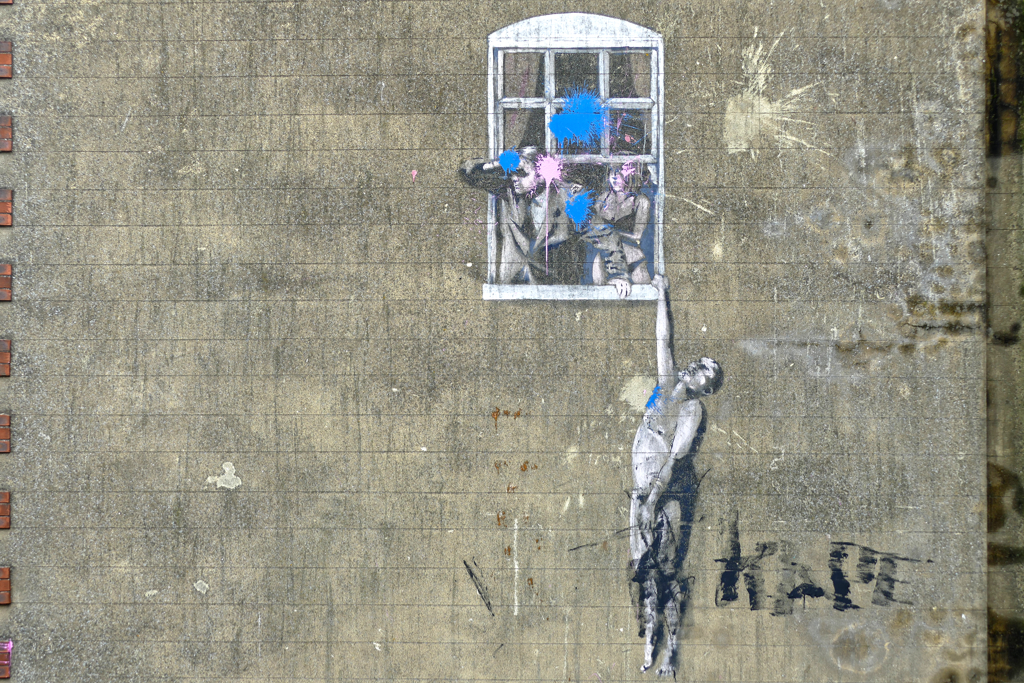
As we look in awe at this iconic original, Duncan lists with some local patriotic pride what other icons Bristol has produced. Starting with the über-American actor Cary Grant, whose name was actually Archibald Alec Leach when he was born in Bristol in 1904.
However, Grant isn’t the only Bristolian movie star: Wallace and Gromit also come from Bristol – and they even beat Grant’s two Oscars by a third Academy Award.
The Historic Side of Bristol
We leave the Well Hung Lover hanging and take the stairs down to The Hatchet Inn. Here, patrons have been drinking their ale since 1606 which makes it the oldest still operating pub in Bristol. Since at the time of our visit, they are shooting a new version of the Forsythe Saga, we cannot quench our thirst here. That’s a shame, but on the other hand, there’s really no shortage of quirky pubs in Bristol.
As we continue our tour along Colston Avenue, one building in particular catches my eye: it’s a semicircular structure made of Portland stone. This is the so-called Electricity House, explains Duncan. It originally housed the electricity company, obviously. Today, however, it accommodates luxury apartments. It was created by Sir Giles Gilbert Scott whose most prominent design became one of Britain’s world-famous symbols: the red telephone box!
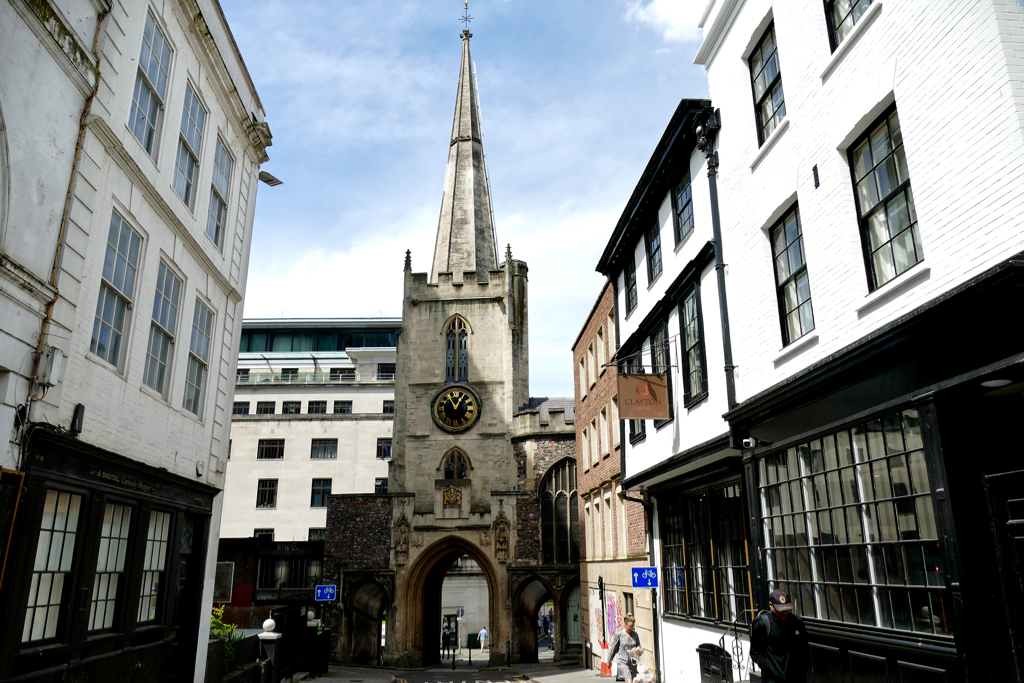
At the Electricity House’s northeast corner, we turn right and stand in front of the Church of St. John the Baptist, built in the 14th century. As it was constructed as a part of the city wall, it is extremely narrow. Its tower actually stands above St. John’s Gate, Bristol’s last remaining city gate. Also, Bristol wouldn’t be Bristol if the interiors of the two tunnels that connect Quay Street with Broad Street weren’t decorated with elaborate graffiti and murals. Mind you, this is by no means vandalism, this is commissioned work!
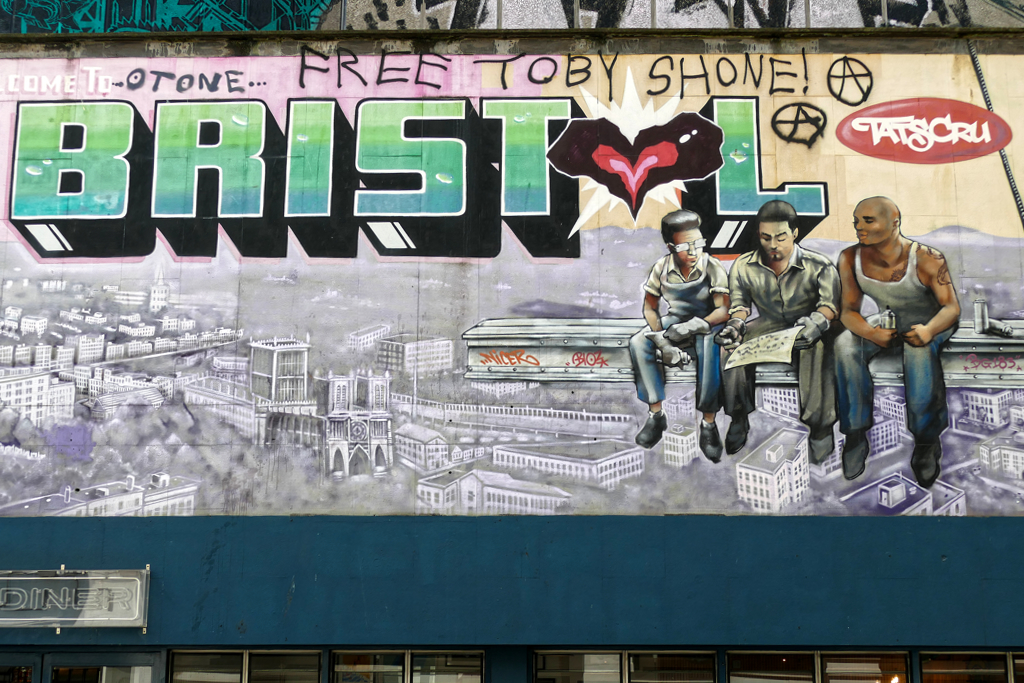
In fact, there are several large-format murals along Quay Street which merges into the shopping district of Nelson Street. You can check them out in my post Best Street Art in BRISTOL – Part I: From Nelson Street to Stokes Croft.
Broad Street
As we basically walk underneath the church building, we enter Broad Street, one of the four original streets that have made up the city of Bristol since Saxon times. Consequently, it is lined with many imposing historical structures.
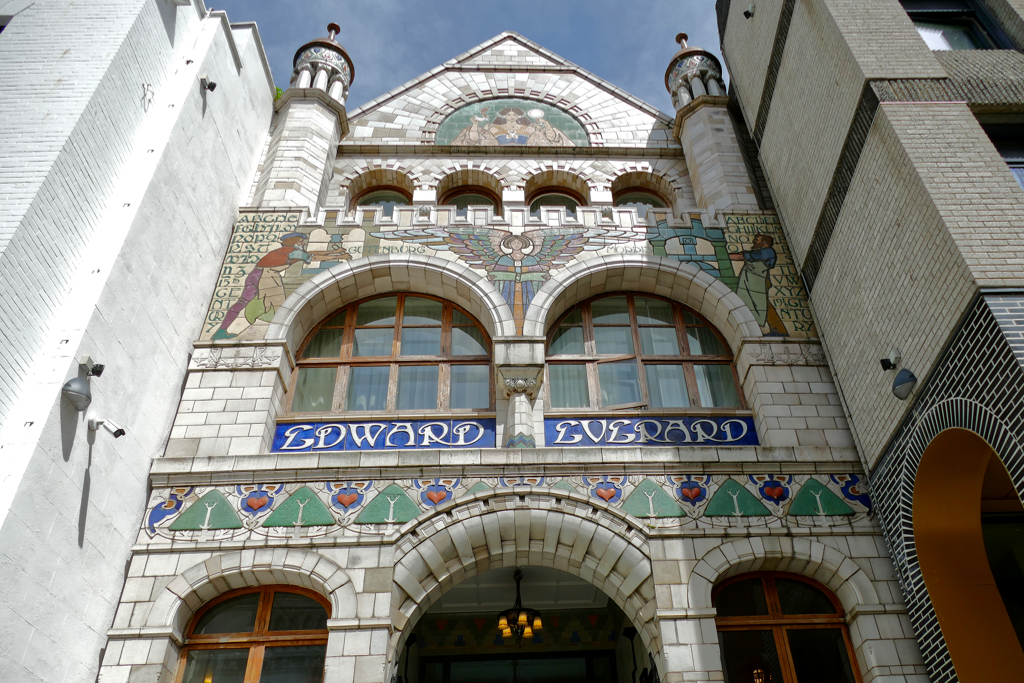
To your left, you will notice Edward Everard’s former printing company. The sumptuously decorated Art Nouveau façade is adorned with a mural by William James Neatby. Although Neatby’s best-known creation is the tiles in the Harrods food hall, he outdid himself artistically with his almost allegorical depiction of Johannes Gutenberg and William Morris, the founders of modern printing.
Also, if your travel budget allows, you can make yourself comfortable in the building that now houses the Clayton Hotel**.
Other notable buildings along the street include the Guildhall Chambers, designed by Richard Shackleton Pope in the Gothic style, the Thistle Hotel in the Italian Renaissance style by Foster and Wood, and the former Bank of England branch, designed by Charles R. Cockerell in the Greek style.
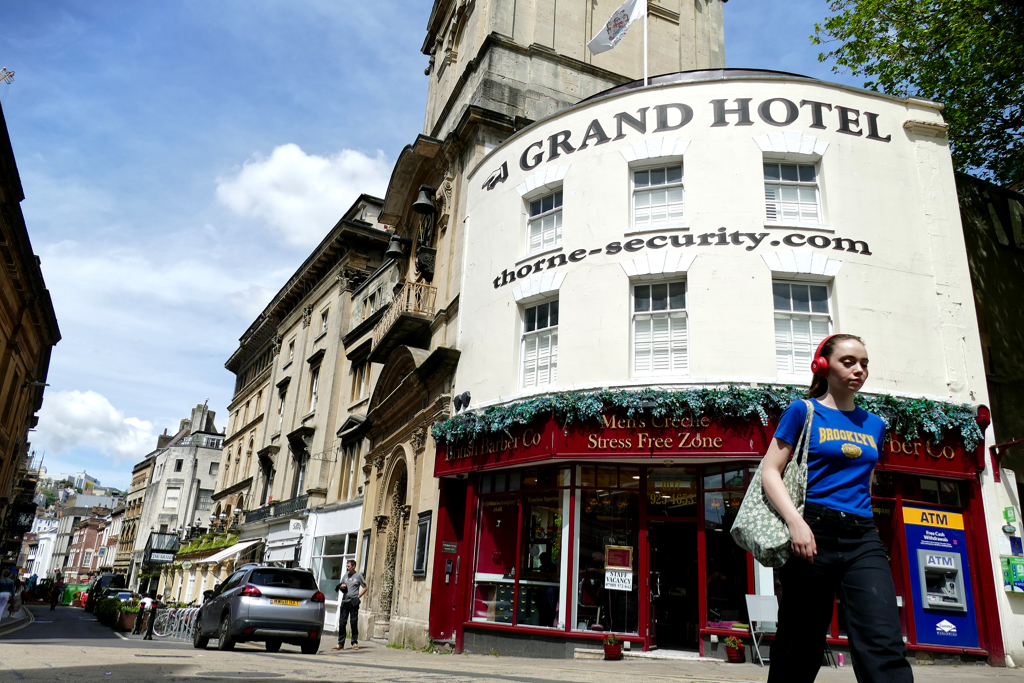
And with that, we’ve reached the end of Broad Street and it’s time for a lunch snack at St. Nicholas Market. Established in 1743, St Nicholas Market is the oldest one in Bristol and arguably one of the best markets in Britain. Here you will find a large selection of independent retailers.
Nevertheless, the market is particularly popular for the overwhelming range of specialties from all over the world. Whether African, Asian, or Latin American: At St. Nicholas, the world gathers around a huge dining table.
From King Street to Queen Square
With full stomachs, we get to King Street, certainly one of the city’s most beautiful lanes. Named after Charles II, it was laid out in 1650 to develop the area north of the River Avon. Today, there is pub after pub and restaurant after restaurant. The most legendary of these inns is certainly the Llandoger Trow.
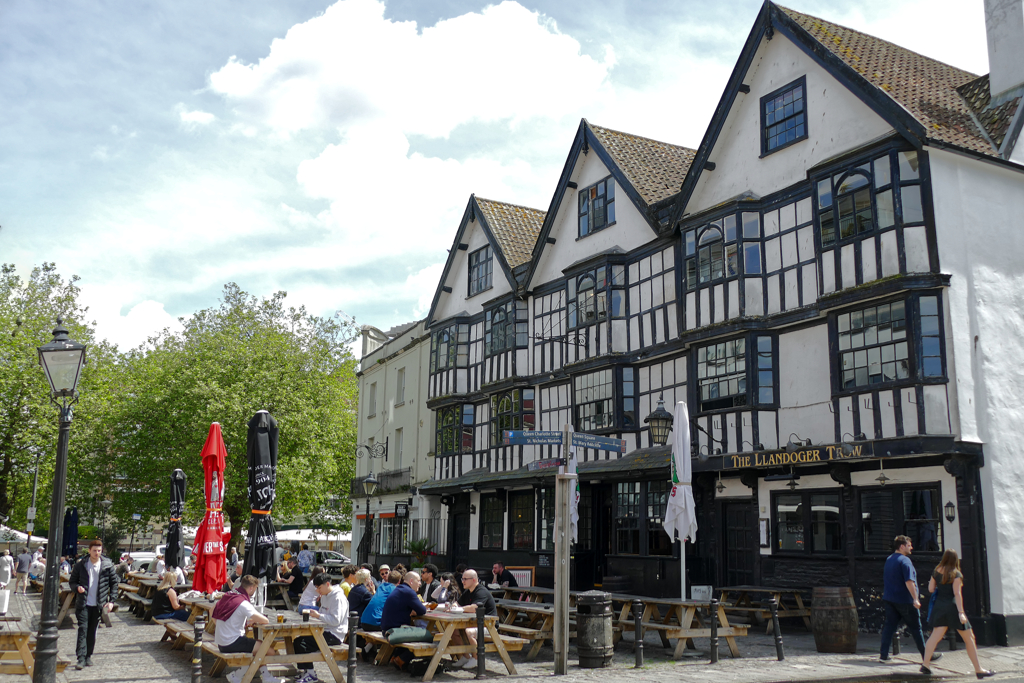
Dating back to 1664, it is named after Llandogo in Wales. There, trows were built, hence, flat-bottomed river boats. What makes Llandoger Trow so special is that according to legend, Daniel Defoe met Alexander Selkirk here. Selkirk was a Scottish Royal Navy officer who spent over four years as a castaway. Obviously, his story inspired Dafoe to write his classic novel, Robinson Crusoe.
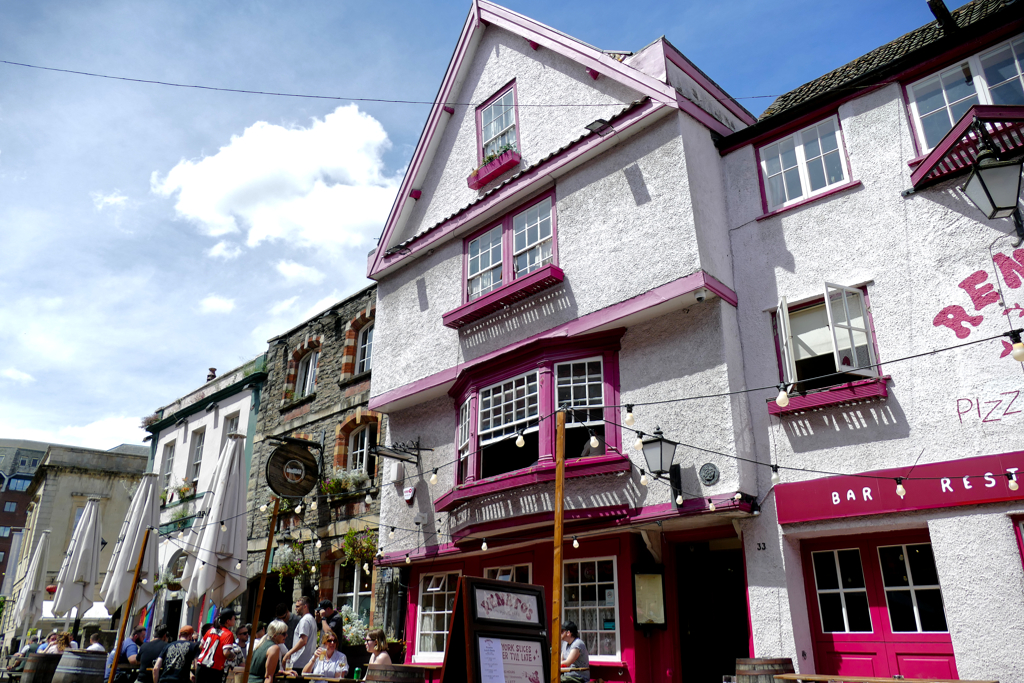
Even if not every house along King Street can boast of such a momentous encounter, they are all noteworthy.

The majority of the buildings date from the 17th and 18th centuries and therefore have Georgian-style façades. No matter what purpose they were originally built for, today they all house either pubs or restaurants.
Right in the middle is the Bristol Old Vic, which emerged from the Theater Royal and the Coopers’ Hall.
So, do I really need to point out that King Street is one of the busiest nightlife streets in all of Bristol?
At the end of King Street, we find ourselves, fittingly, in Queen Square, where the official walking tour ends.
Here, Bristol is turning over a new chapter. South of the square lies the Floating Harbor which takes me back to the city’s momentous seafaring era.
On the Waterfront
In the past, Bristol’s greatness was based on an economy focused on domestic and overseas trade. Rivers like the Severn and Avon made commerce with English cities such as Chester, Milford Haven, London, and Plymouth possible. Products like iron, wood, and cloth entered the port of Bristol and went from there to Ireland, Northern Europe, France, and Spain. In return, Bristol imported goods such as wine, spices, and olive oil. Bristol was the second most important port in England after London. The exceptionally high tidal range enabled ships to quickly reach the protective harbor through the narrow, forested gorge of the Avon River.
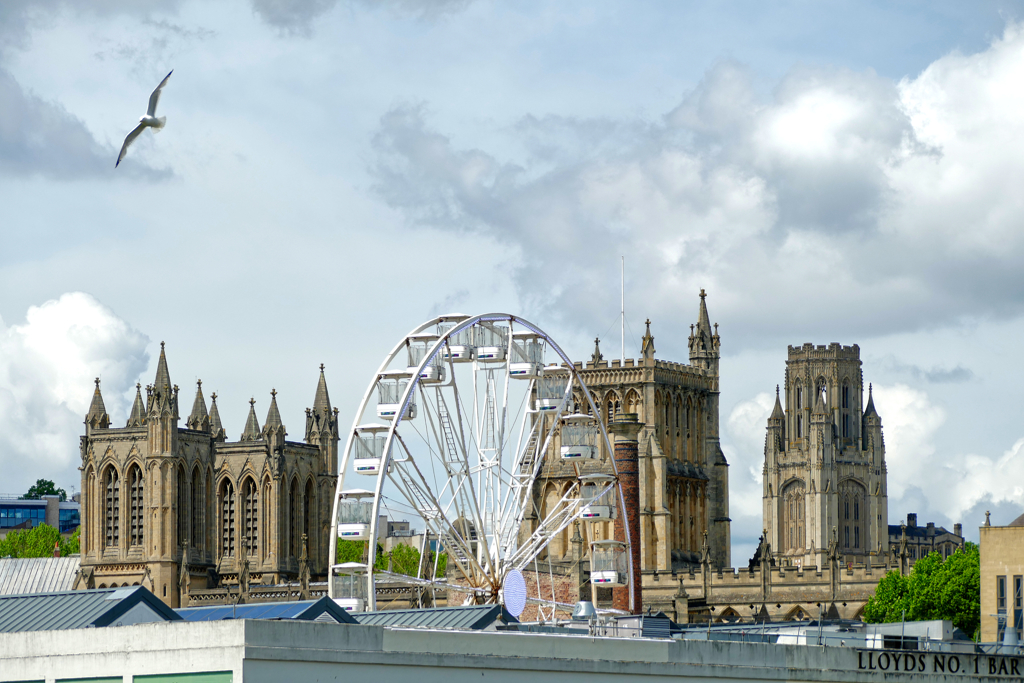
In the 17th century, England founded its first colonies in North America. The transatlantic trade began, which primarily included the infamous triangular trade. Between 1698 and 1807 there were more than 2,000 slave voyages. The ships transported approximately 500,000 captive people from Africa to America for slave labor.
For a long time, Bristol’s involvement in slavery lived on in its architecture, street names, and statues.
Edward Colston: Falling From Grace
Edward Colston was born in Bristol in 1636 into a wealthy merchant family and later became a businessman and politician himself. He built up a lucrative trading business and successfully conducted international maritime trade with European port cities, but also with Africa and later America.
He was an active partner in the Royal African Company RAC. Among other things, this association had the English monopoly on the transport of slaves from the west coast of Africa to America. The RAC was thus involved in the deportation of more than 84,000 Africans to America. Around a quarter of these people died on board the ships during the crossing. The survivors were sold into slavery. Colston was instrumental in this slave trade.
But parallel to his lucrative business in London, he was also active in his hometown of Bristol, where his parents had returned. There, among other things, he inherited his brother’s trading business and became a partner in a sugar refinery that processed raw cane sugar, which was produced by slaves on the plantations on the Caribbean island of St. Kitts.
Even after Colston withdrew from the RAC in 1692, he continued to increase his wealth through involvement in the slave trade, serving as a commissioner and investor in the London-based South Sea Company, which supplied Latin America with slaves.
Render Therefore to all Their Dues
Colston retired from business in 1708. While he lived in Mortlake, west of London, he supported schools, churches, hospitals, and almshouses in his hometown of Bristol with considerable sums of money and was therefore considered a philanthropist. This is how the city initially paid tribute to its benefactor after his death. A building and a street were named after him and in 1895, wealthy merchants commissioned a bronze statue of Colston. The statue faced the docks from which slave ships had once departed. On the plinth, Colston was described as “one of the most virtuous and wise sons of her city”.
And then George Floyd was murdered which led to worldwide BLM protests.
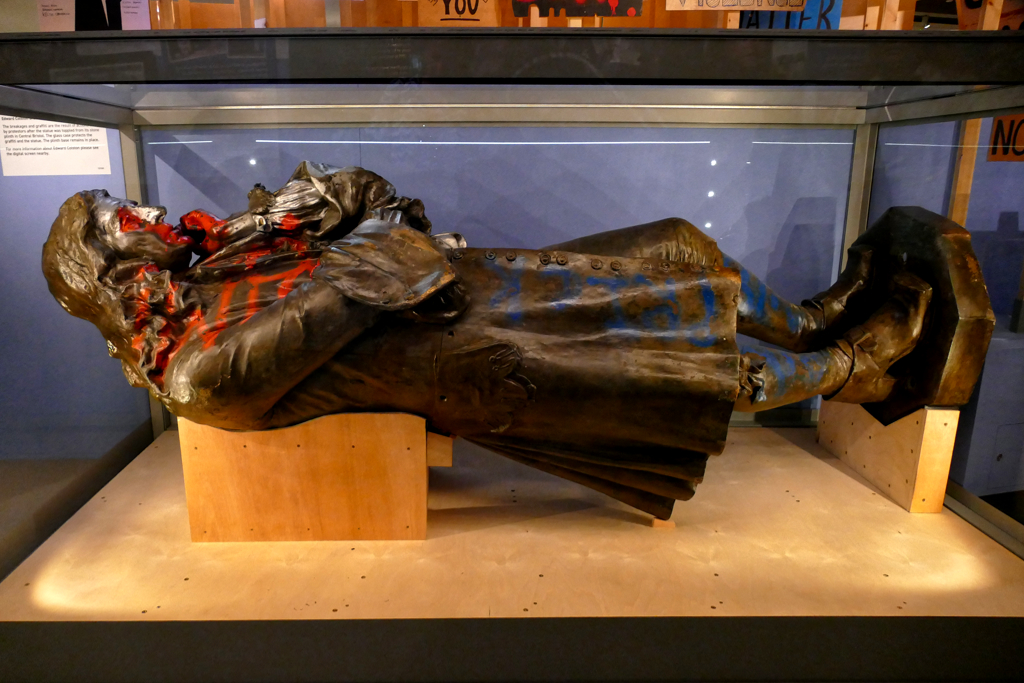
On June 7, 2020, demonstrators toppled Colston’s statue from its pedestal and sank it into the harbor basin during Bristol’s BLM protests.
Eventually, the city administration had him fished out of the water. Slightly battered and without his walking stick, Edward Colston now rests in a kind of glass coffin in an exhibition on the slave trade at the M Shed museum.
Fun Fact
It’s actually a rather disturbing fact that the campaign group Save Our Statues tried to stop people from visiting the exhibition by reserving all the online tickets. Trying to stop people from dealing with the past doesn’t shed a good light on a campaign; just sayin’.
M Shed Museum
Huh – what’s the M Shed? Well, the M Shed is a museum you should definitely pay a visit to when visiting Bristol.
Following the closure of the Bristol Industrial Museum in 2006, a dockside warehouse and transit shed from the 1950s was converted into the M Shed Museum. This venue covers all aspects of life and work in Bristol. It houses thematically sorted exhibitions of 3,000 artifacts. Apart from paintings and different kinds of relics, you get to see newspaper clippings from the city’s most important political episodes, such as the bus boycott by West Indian workers in 1963. They were protesting against the Bristol Omnibus Company’s refusal to employ black workers.
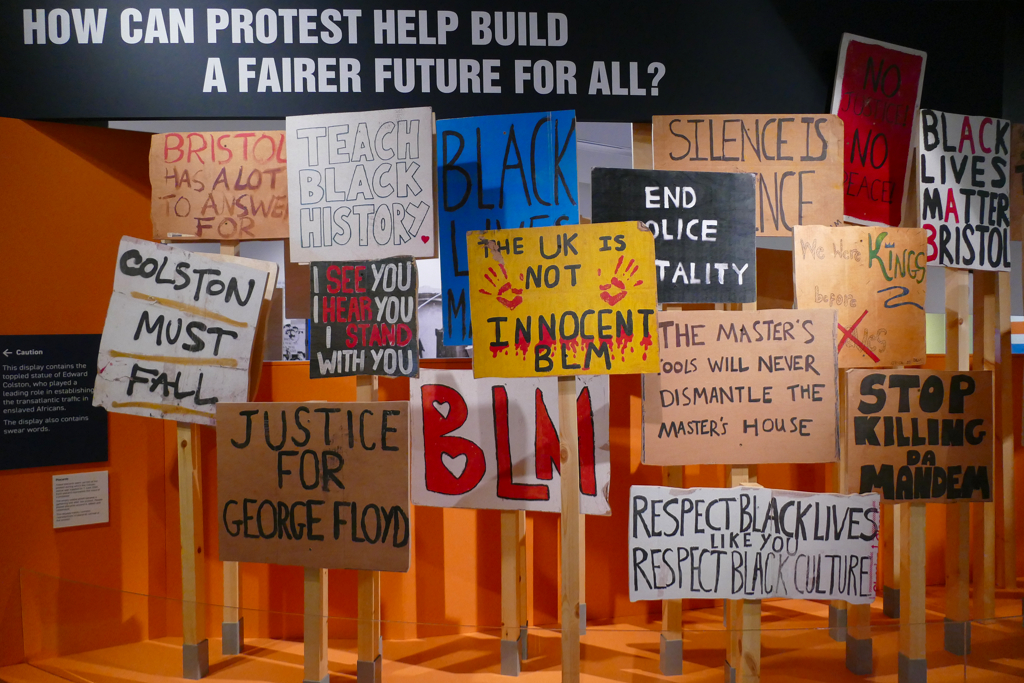
Of course, the light, positive, and innocent sides of Bristol can also be seen. For instance, models of Nick Park’s Oscar-winning animation duo Wallace and Gromit or a pink-painted record player provided by the great trip-hop band Massive Attack I was raving about above.
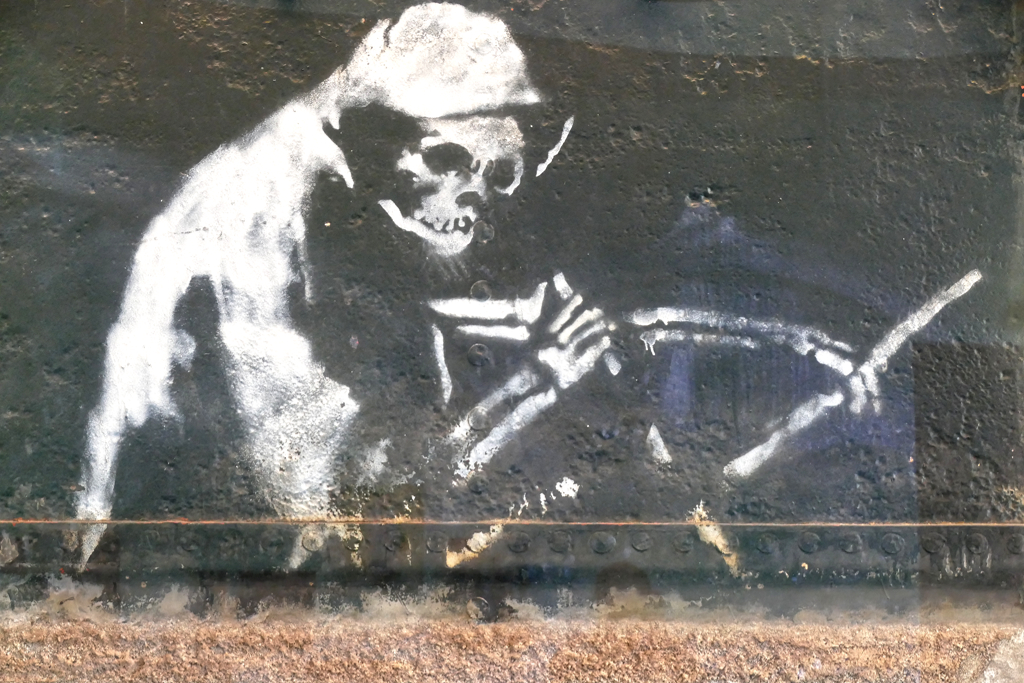
The M Shed is open Tuesday to Sunday from 10 a.m. to 5 p.m. Admission is free, but they would be happy to receive a small donation.
Sittin’ on the Dock of the Bay
Since the M Shed is located at Prince’s Wharf right in the harbor, there are several historic ships bobbing in front of the museum. There are also four electrically powered freight cranes on the quay, which were built by Stothert & Pitt in 1951. Three of these cranes are operated on selected weekends just for the show.
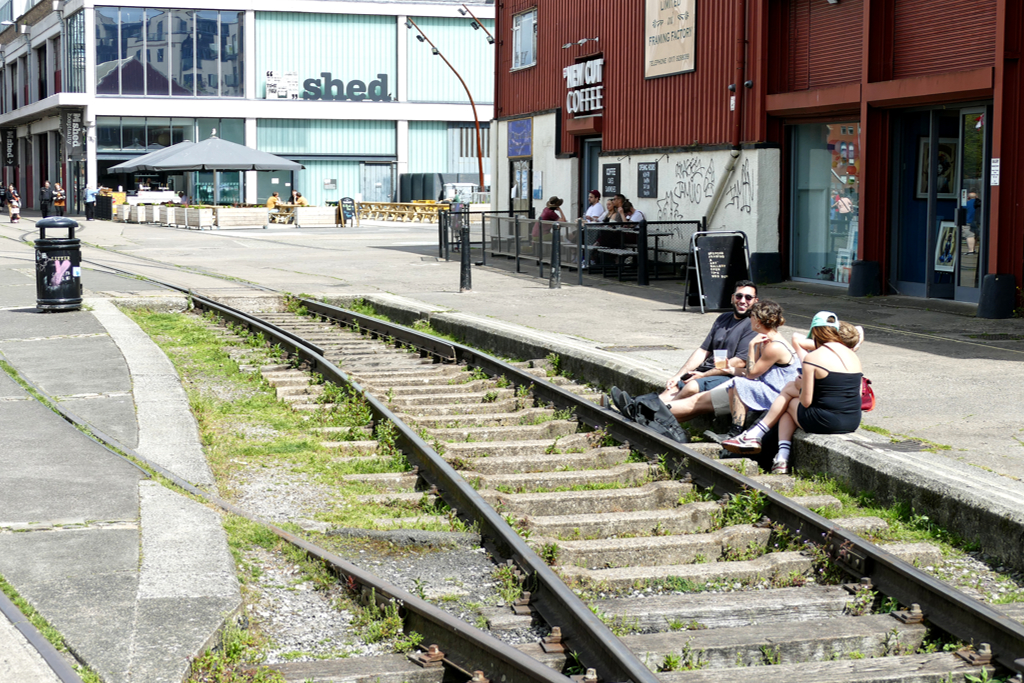
Another great leisure activity is a ride on the harbor railway along the quay, but this only takes place on selected weekends. Passengers can then travel back in time on restored steam locomotives and rolling stock.
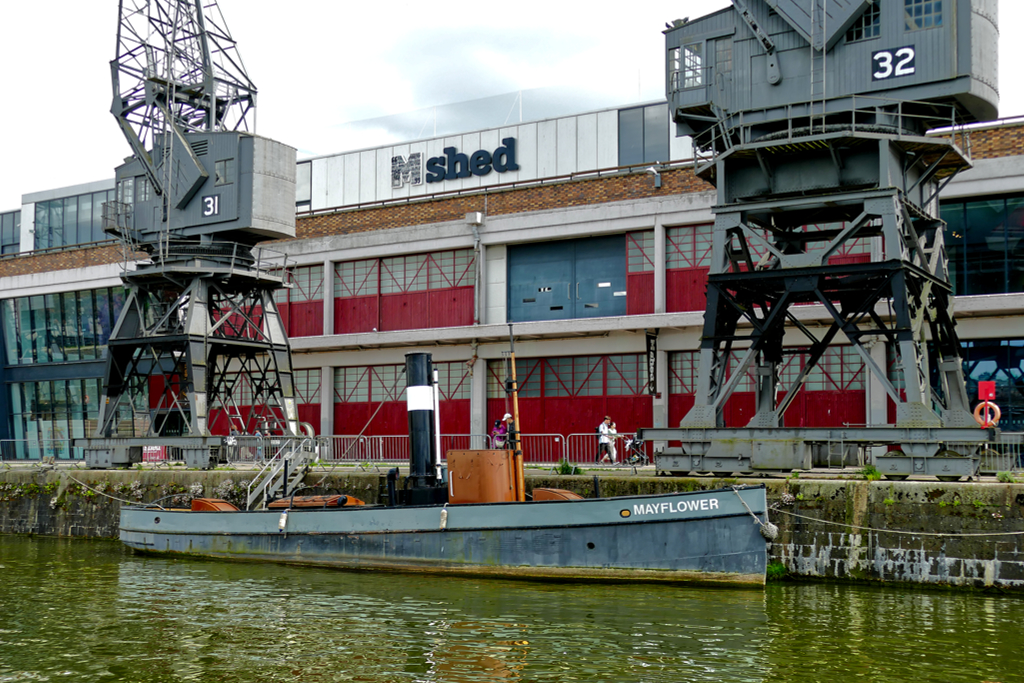
For the most accurate and up-to-date information, it’s best to visit the website of the Bristol Harbour Railway, as schedules and prices can change due to special events or maintenance. The general ticket is 4.50 Pounds for a round trip, and kids up to six years old travel free.
Harbor Cruise
If you don’t have the opportunity to take the train, you can always take an idyllic boat tour of the Floating Harbor. It’s great fun to let the good people from Bristol Packet take you on a boat trip across the seven seas. Here you not only get a lot of well-founded information, but they also convey their knowledge with a lot of fun and humor.

Depending on how much time you want to spend on the water, you can choose between different cruises, from a 45-minute cruise around the harbor for £10.25 to a five-hour pub lunch cruise to Hanham Mills for £26 – and lots in between. The best thing to do is to check their website, where you should book straight away before your desired date is fully booked.
Houses in Many Colors
One of the many good reasons to take a harbor cruise is the unobstructed view of one of the most charming sides of Bristol: As if strung together, colorful houses stand in rows in the Hotwells and Cliftonwood areas on the north bank.
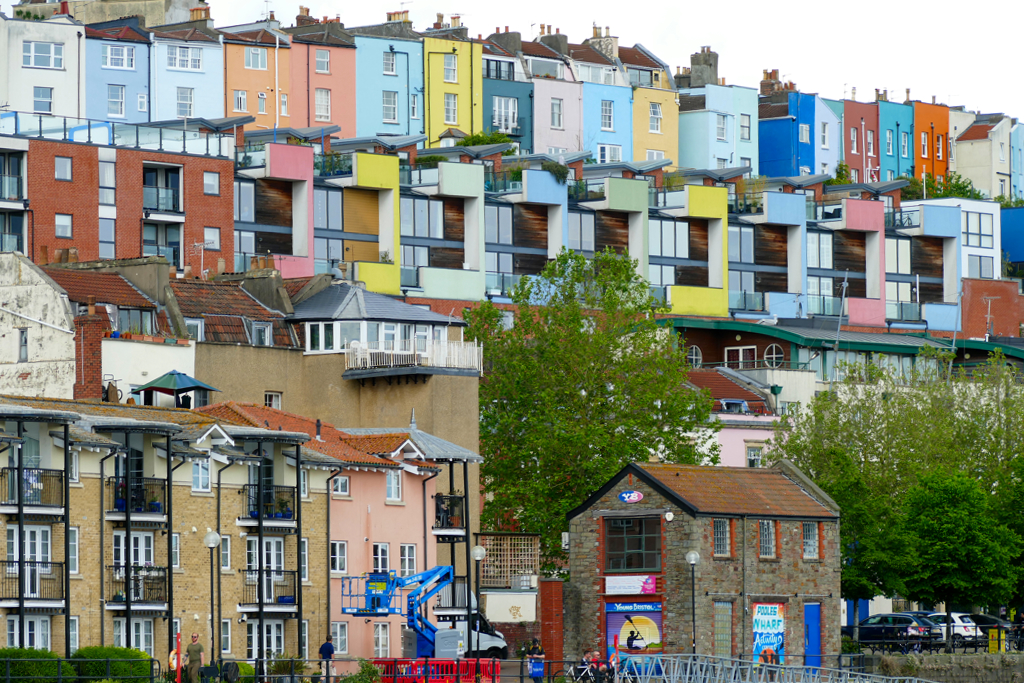
Legend has it that the tradition of painting Bristol houses in bright colors has actually several origins.
The tradition began in the 1960s and 1970s as parts of Bristol were being redeveloped. This period was marked by a shift towards more expressive and individualistic lifestyles, and colorful houses became symbols of this creative spirit.
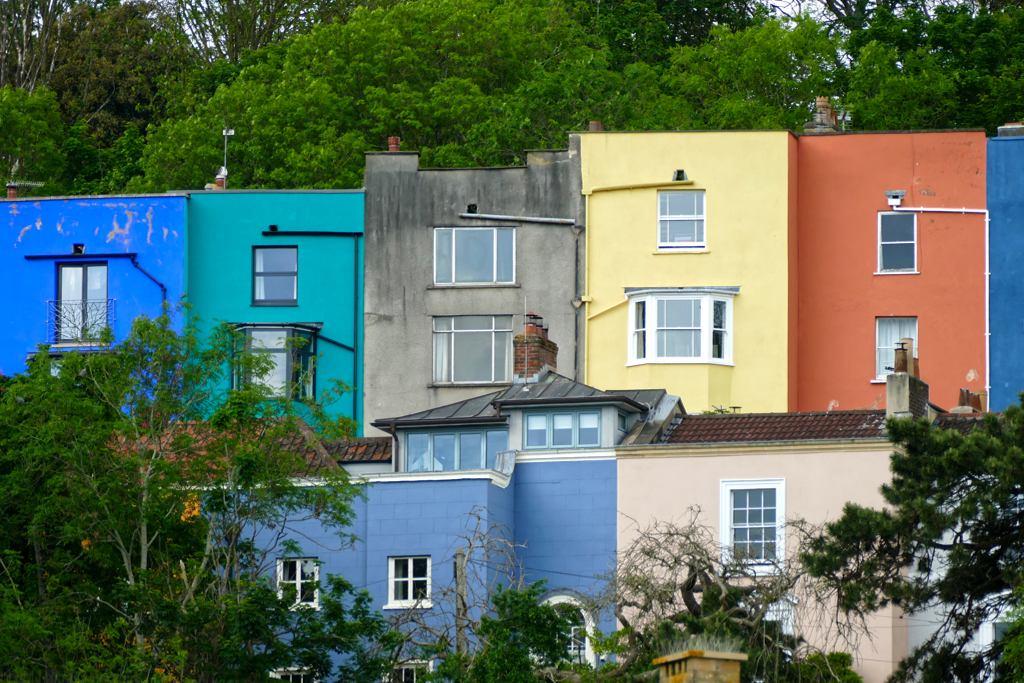
Hence, the houses reflect the creative and diverse personality of the city. At the same time, they create a community identity. Painting distinguishes neighborhoods and makes them visually appealing. It creates a positive ambiance for residents and also attracts visitors. It has been proven that in economically and socially challenged areas, bright colors stand for renewal and revitalization. Painting homes in vibrant hues not only transforms the appearance. It makes neighborhoods more liveable and even safer for its residents.
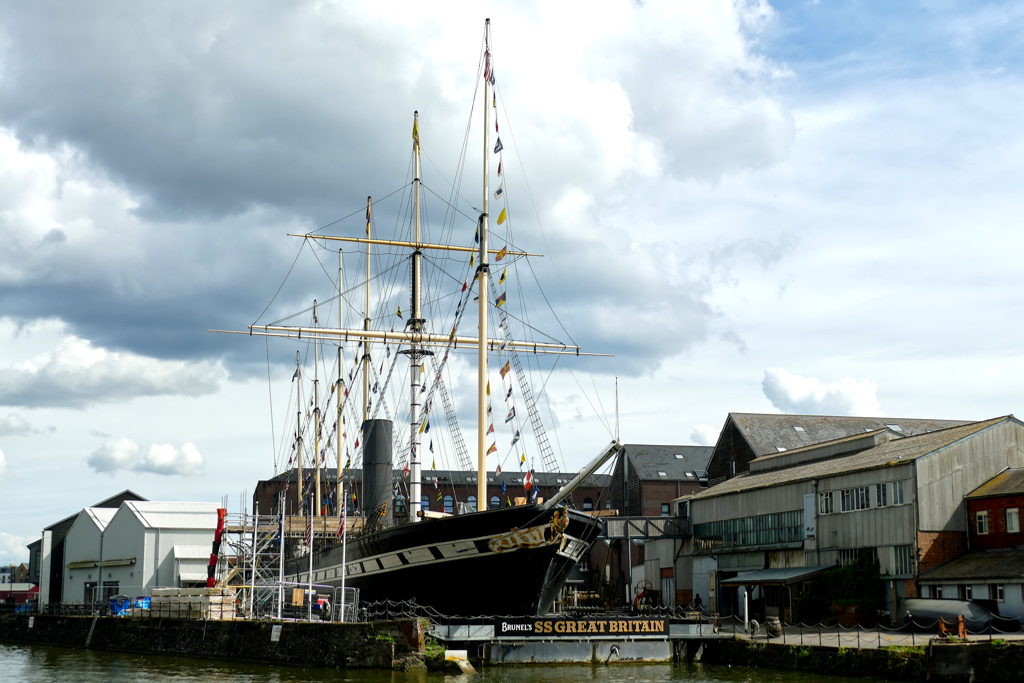
Overall, the tradition of painting houses in Bristol in bright colors is a mix of historical practice, cultural expression, and community spirit, making it yet another distinctive and popular feature of the city.
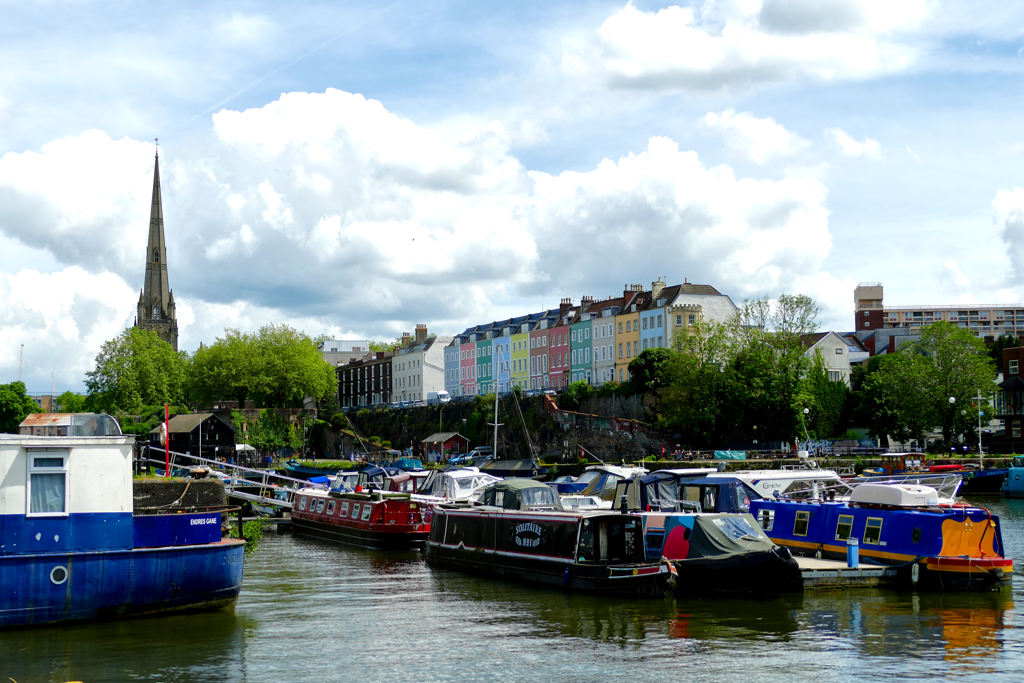
Arnolfini Arts
Together with his wife and the painter John Orsborn, Jeremy Rees founded the Arnolfini Art Center above a bookshop in Clifton in 1961. And yes, it is actually named after Jan van Eyck’s 15th-century painting The Arnolfini Portrait.
In 1968, the Arnolfini transferred to the W Shed, which eventually became the home of the Watershed Media Center. So in 1975, the Arnolfini moved across the canal to Bush House, a building designed by architect Richard Shackleton Pope as a warehouse in Byzantine Bristol style in the mid-19th century.
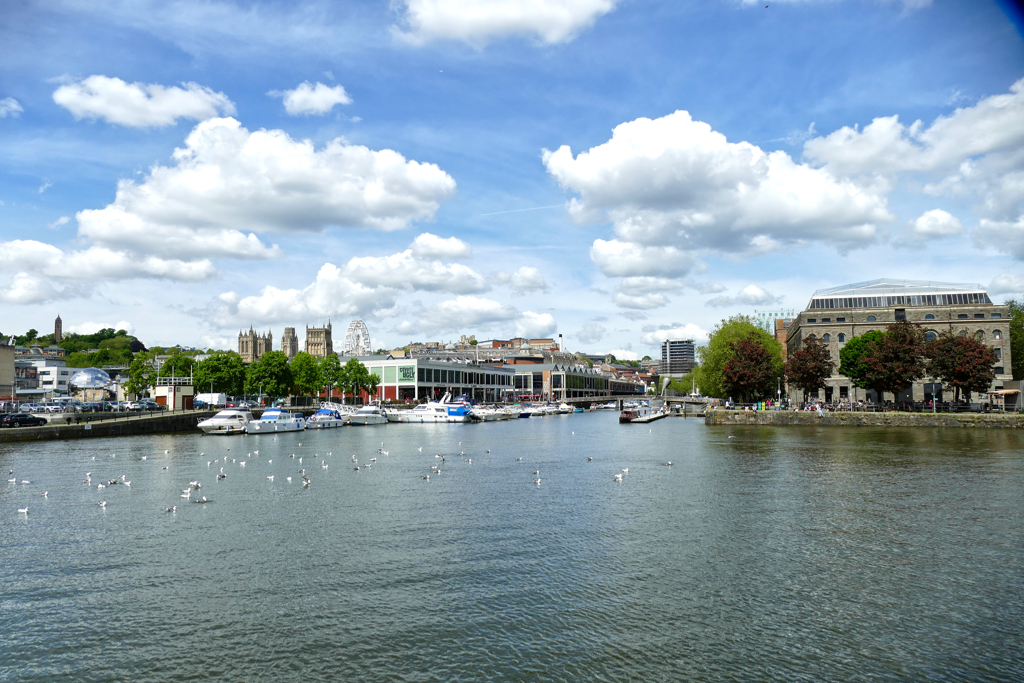
It is an international art center that exhibits contemporary art and also organizes music and dance events, poetry and book readings, and other cultural events.
The Arnolfini is open Tuesday to Sunday from 11 a.m. to 6 p.m. on weekdays and they are closing already at 4 p.m. on weekends. Admission is free.
Spike Island Art Center
Even though the north shore of the Floating Harbor is more popular and seems to have more attractions, it is definitely worth crossing the so-called Spike Island to the south shore. As a matter of fact, Spike Island was built in the early 19th century for wharves, shipyards, warehouses, and other related port industries. However, with the renovation of the docks, the use of the island has also changed. Today, there are nice restaurants and popular pubs as well as high-priced housing and galleries.
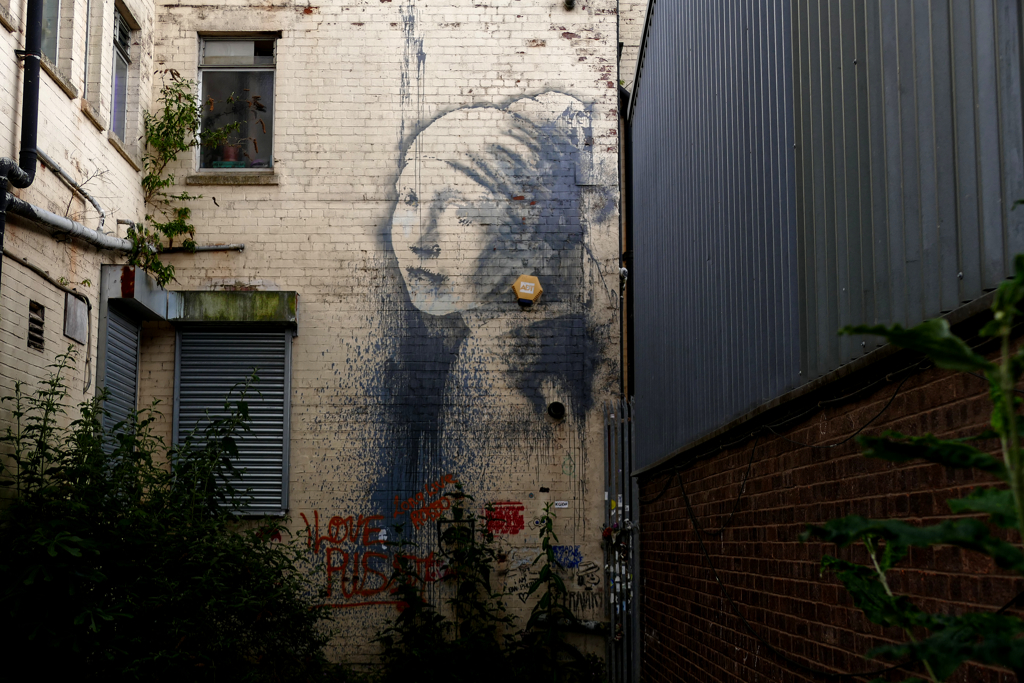
One of the new facilities is the Spike Island Artspace in the former Brooke Bond tea packaging factory.
It was founded in the mid-1970s by a group of painters, sculptors, and graphic artists.
While individual artists set up their own studios, Bristol Printmakers offers an open workshop where all Artspace members can freely use the printing presses and other equipment.
Obviously, in this center art is not only made, but also exhibited. As the complex also includes Café Emmeline, Spike Island Artspace is also an excellent place to take a break from sightseeing.
The galleries at the Artspace are open from Wednesday to Sunday from noon to 5 p.m. Admission is free. Note that the café opens already at 10 a.m.
Up And Down Park Street
One of the most historic and iconic boulevards in Bristol is Park Street. Although only half a kilometer long, this prominent street stretches from College Green all the way up to the university as well as some of the most important cultural institutions around the Clifton Triangle.
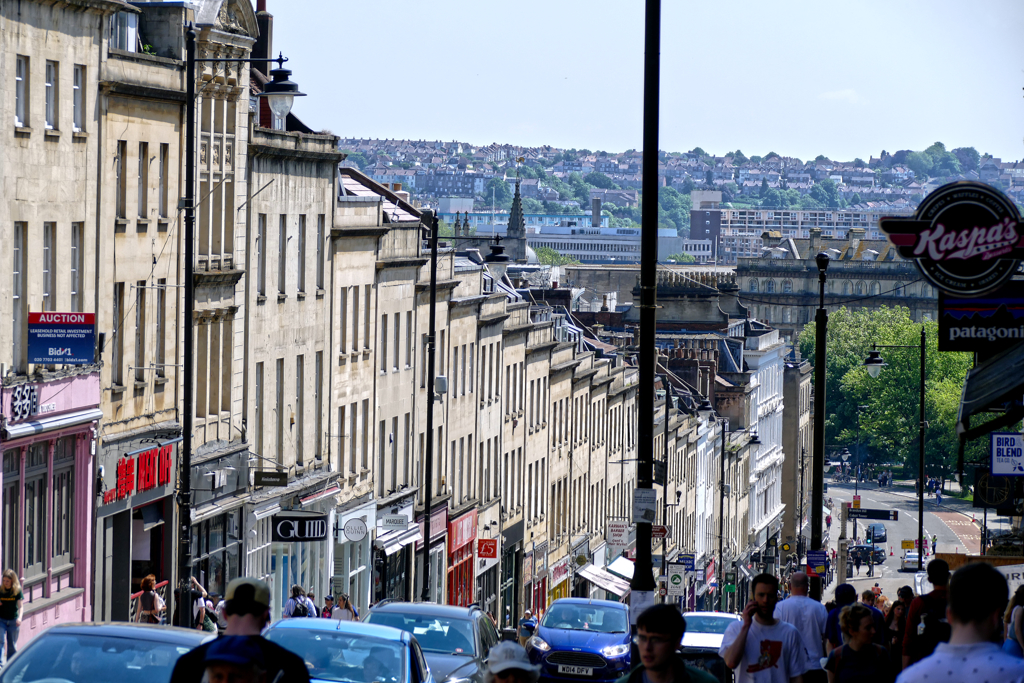
Park Street’s history dates back to the 18th century when it was developed as a residential area for Bristol’s wealthy merchants and shipowners. To this day, Georgian and Victorian architecture remains a testament to Bristol’s rich history. Large churches and other public buildings add to the splendor and provide venues for concerts, art, and culture.
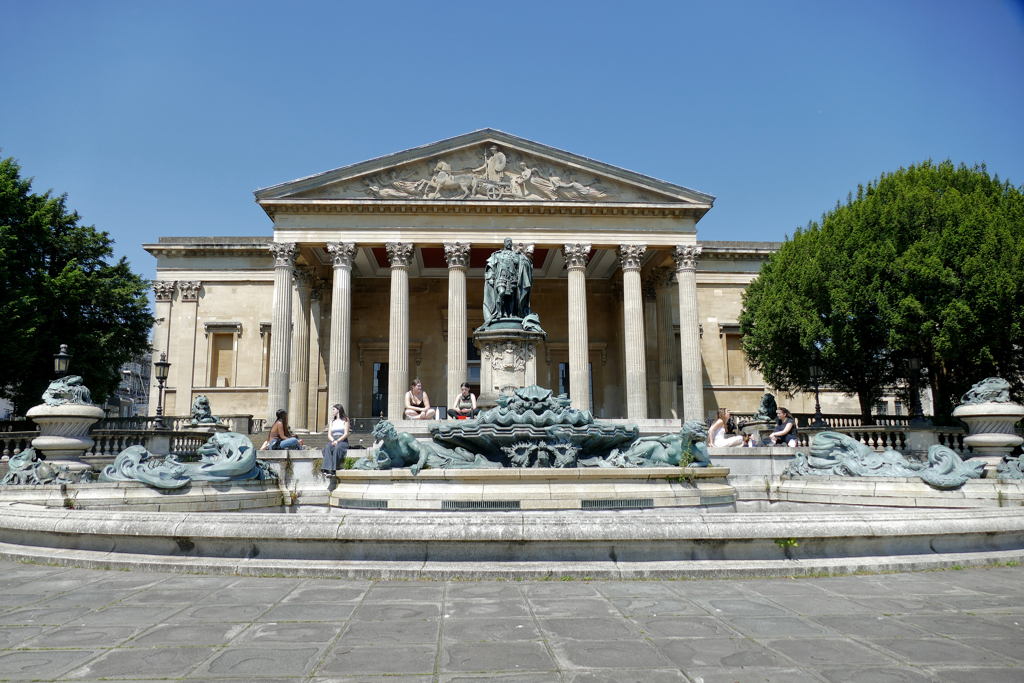
However, Park Street is also a shopper’s paradise with a mix of luxury boutiques, independent retailers, and popular brand stores. The street also offers an eclectic mix of cafes, restaurants, and bars.
Cultural Institutions
At the top of the street, you will find renowned cultural institutions such as the Royal West of England Academy, the Victoria Rooms concert hall, and most importantly the Bristol Museum & Art Gallery.
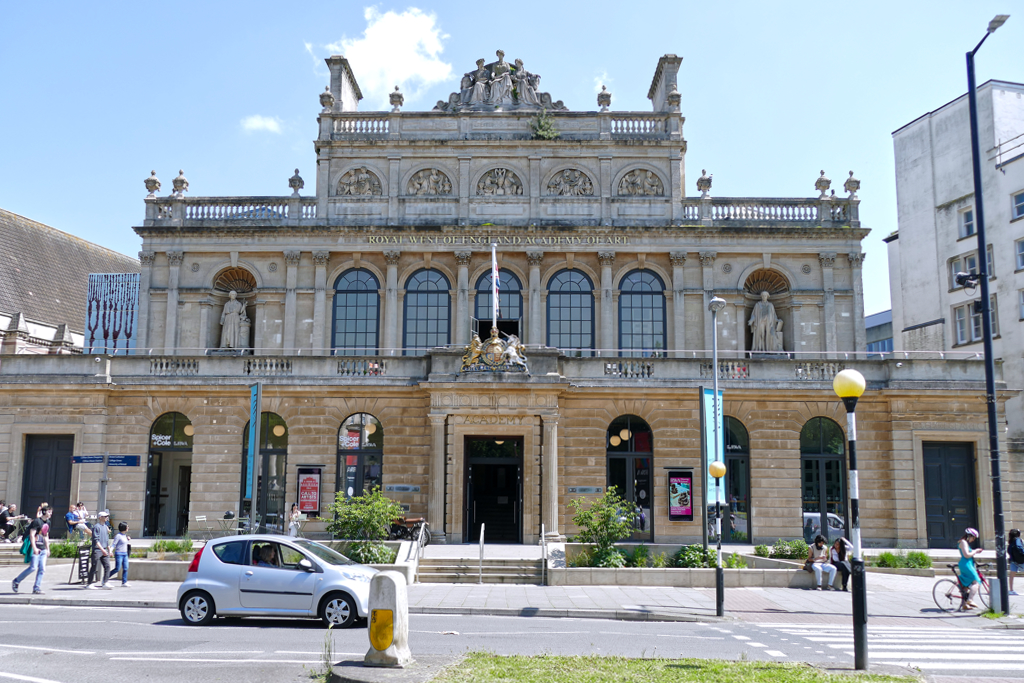
This building, built in the Edwardian Baroque style, has a relatively small but diverse collection of art and science. It gained particular fame in the summer of 2009 thanks to a huge Banksy exhibition. Although it was developed in secrecy and with no advance publicity, it quickly gained worldwide attention, obviously.
The Bristol Museum & Art Gallery is open from Tuesday to Sunday between 10 a.m. and 5 p.m. Entrance to the permanent collection is free of charge.
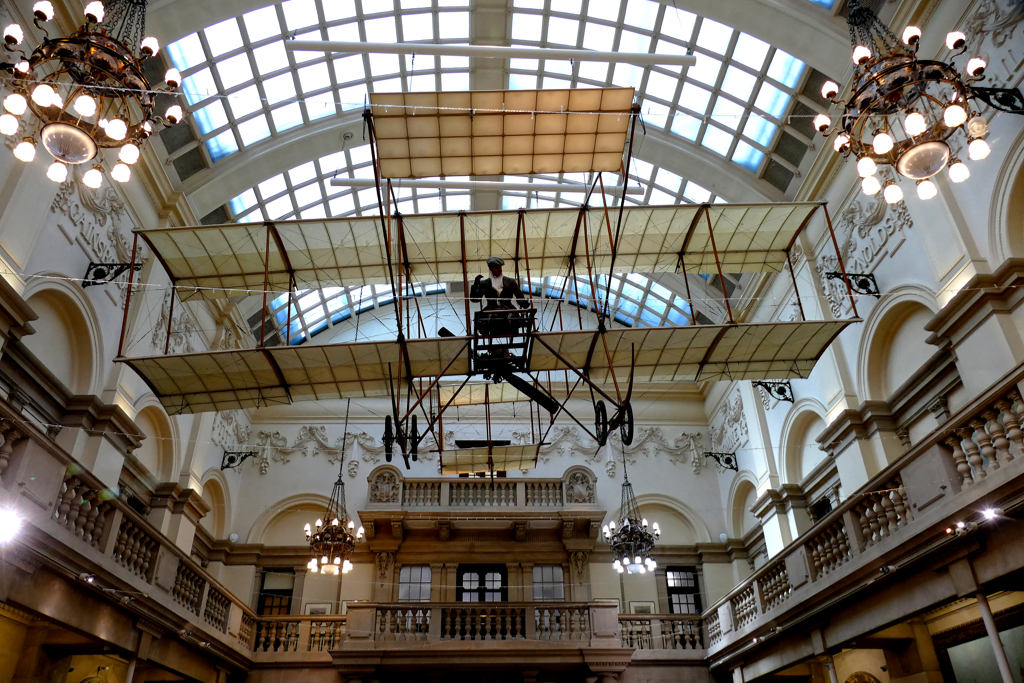
The impressive Wills Memorial Building is next to the museum, which interestingly only opened in 1925. Nevertheless, this neo-Gothic structure is a landmark not only of the University of Bristol but of the city of Bristol as such. As a matter of fact, the University significantly shapes the character of the area around Park Street. The presence of students and academic staff gives the neighborhood a relaxed and fresh vibe.
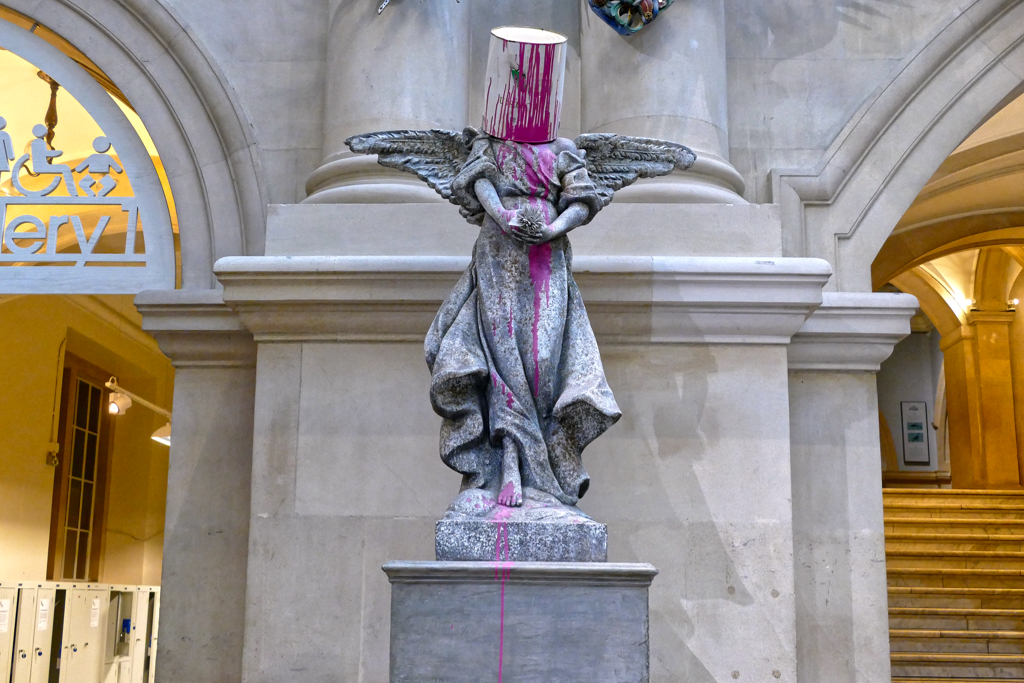
In summary, Park Street is a dynamic and multifaceted part of Bristol, offering a rich blend of history, culture, shopping, dining, and entertainment. Its unique character and vibrant atmosphere make it a must-visit destination in the city.
Stokes Croft And Montpelier
Stokes Croft is a bit of a stubborn bastion right in the heart of Bristol. Like a Gallic village whose residents have fallen into a creative magic potion. Whereby, Stokes Croft isn’t even a real district, but rather the informal name for the entire area surrounding the main street called Stokes Croft.
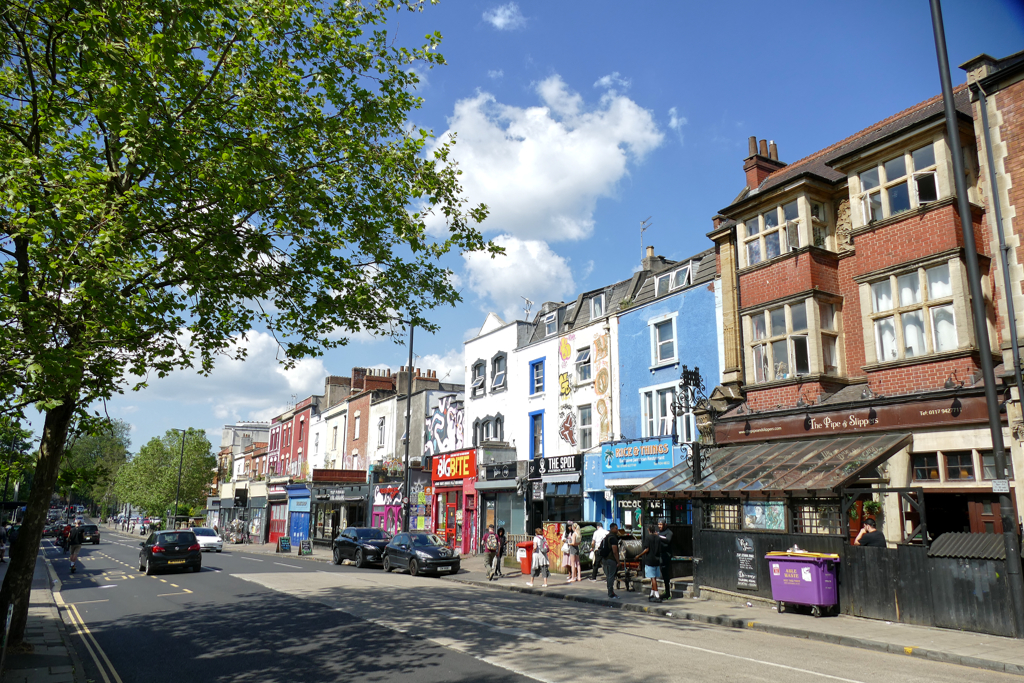
The area is best known for its run-down houses, squats, anarchist activities, counterculture, and alternative nightlife. This militant spirit has led to the emergence of a group of activists calling themselves the People’s Republic of Stokes Croft, in short PRSC. They try to make the area more liveable for residents through actions and art in public spaces. Therefore, you’ll find lots of graffiti and street art.
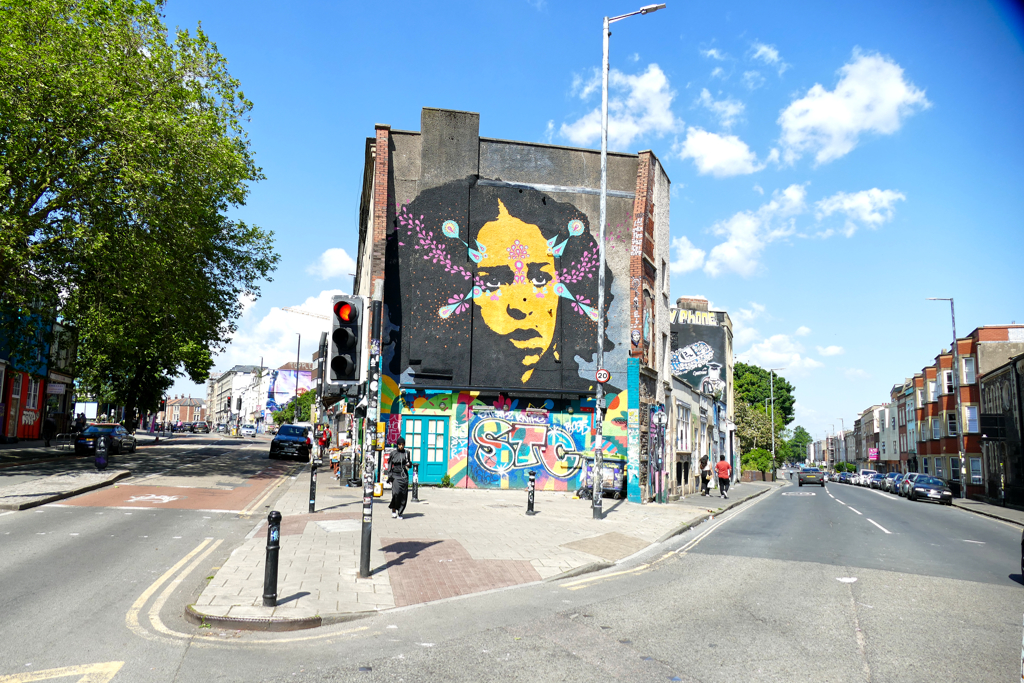
These works were obviously not created as part of a funded cultural project, but as an expression of anger and resistance. For example, at the intersection of Stokes Croft and Jamaica Street is Banksy’s mural The Mild Mild West. However, in 2007 the mural was chosen as Bristol’s alternative landmark. Children of the Revolution – that’s all that’s left to say.
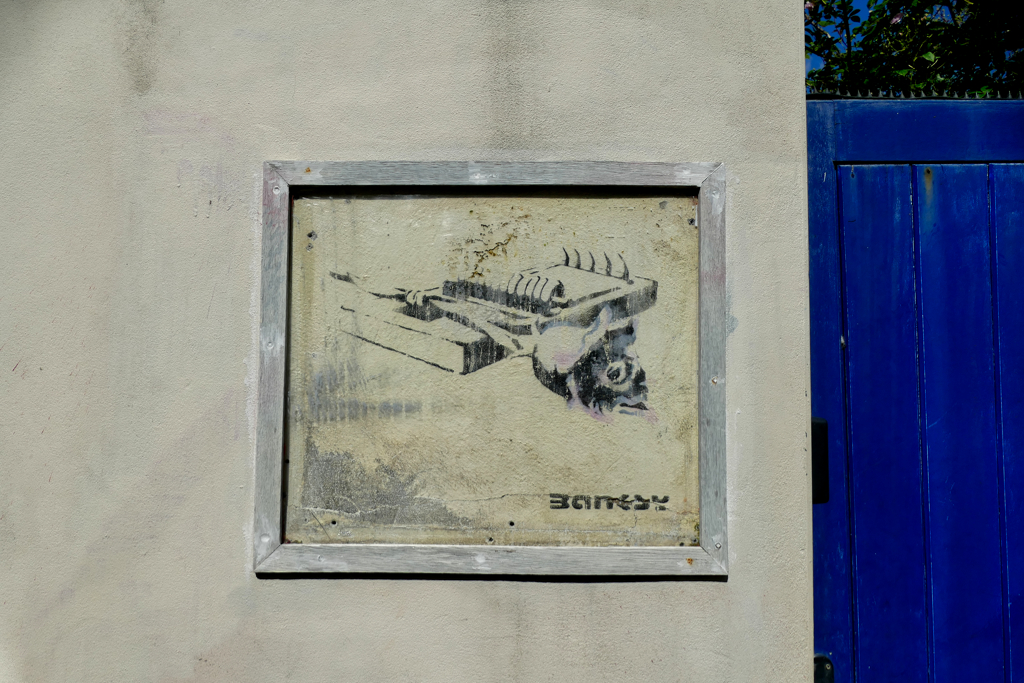
However, Stokes Croft gained even more notoriety when local residents protested against the opening of a Tesco supermarket in 2011. After the low-key opening of the store, there were various protests. However, riots took place as the police came to evict squatters from a property opposite the store.
Bohemian Backyard
To the northeast, Stokes Croft flows seamlessly into the Montpelier district. Although it’s also more funky and relaxed, this part of the city is much more civil than Stokes Croft with lots of pretty townhouses, bohemian cafes, and trendy restaurants.
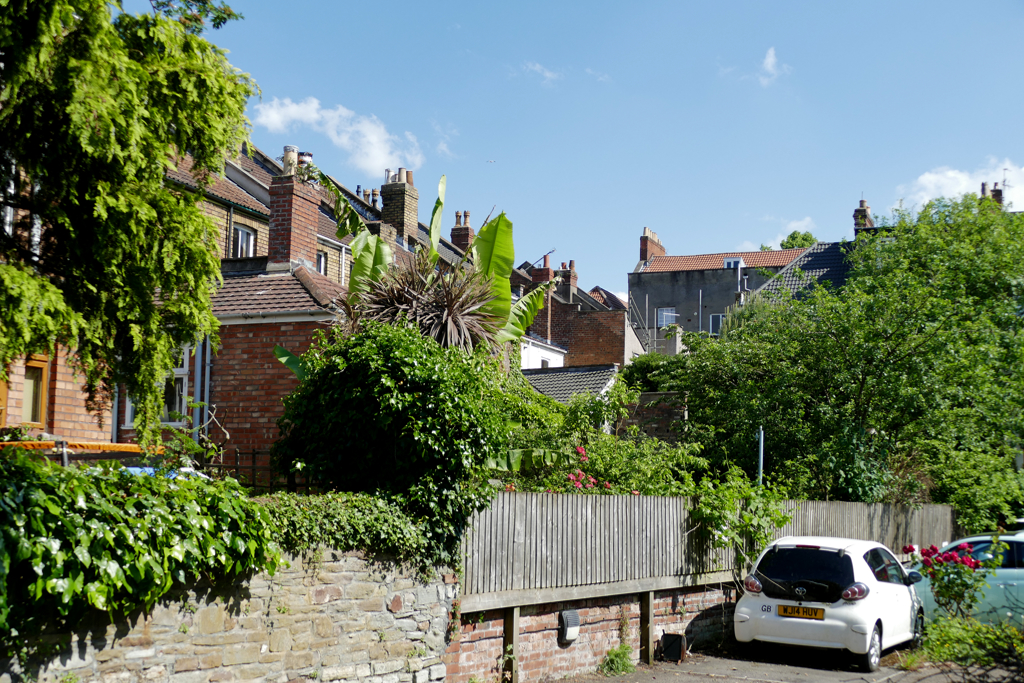
Brightly painted Victorian and Georgian terraces line the streets. Consequently, the street art in this area is more decorative and at most a little ironic, but not as determined and revolutionary as in the wild heart of Stokes Croft.
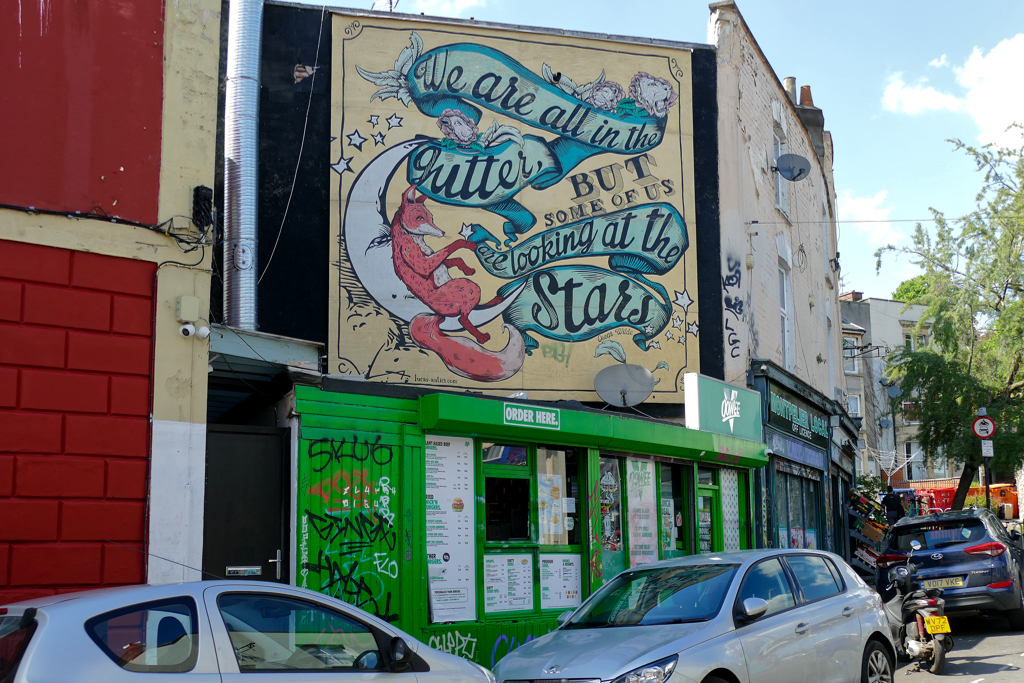
Since this post is intended to be a comprehensive guide to various sides of Bristol, urban art remains just one of the manifold aspects. However, you can delve deeper into the topic in my posts Best Street Art in BRISTOL – Part I: From Nelson Street to Stokes Croft. There you’ll find out more about the development of Bristol’s urban art as well as introductions to many artists and their works.
My Tip
If you really want to be right in the middle of the action without breaking the bank, check out if Full Moon Backpackers** is for you.
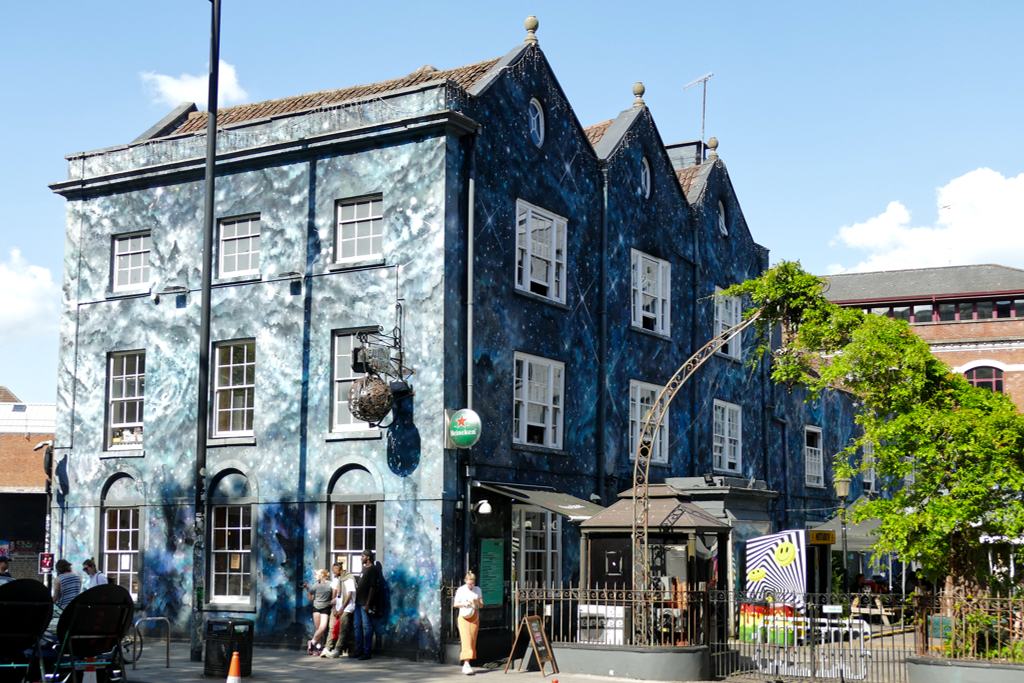
Clifton
The contrast between Stokes Croft and Clifton could hardly be greater. The district northwest of the center is not determined and wild but rather cultivated and bougie. But that doesn’t detract from its charm and appeal, and a visit to Bristol wouldn’t be complete without spending a few hours in the enchanting setting of Clifton.
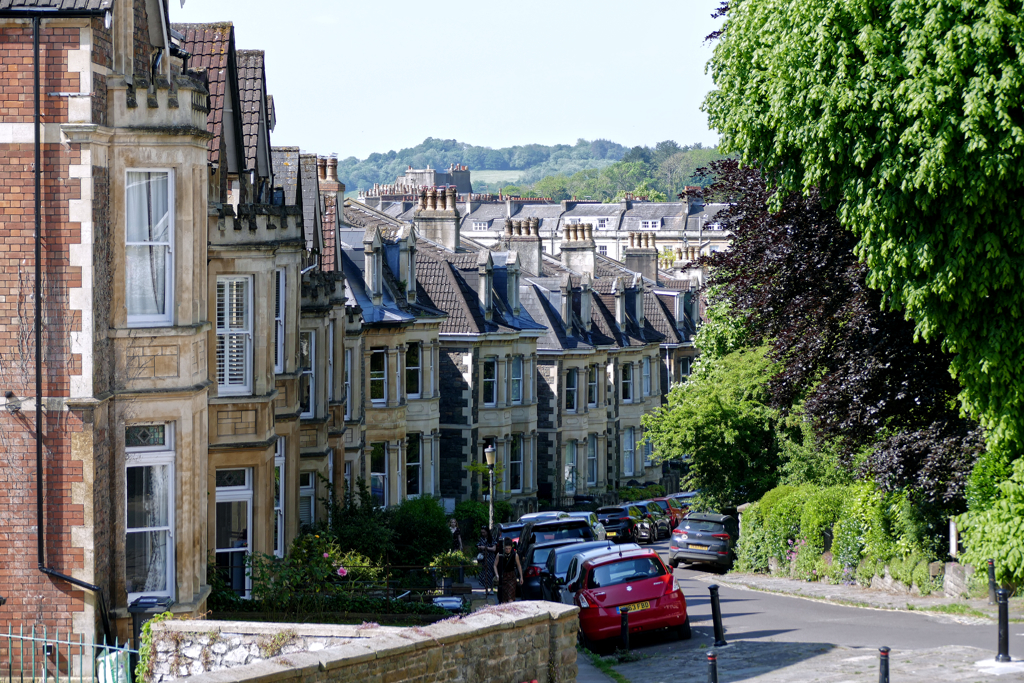
Despite being part of a busy city, Clifton retains a charming village vibe with a strong sense of community. A visit to the weekly Clifton Village Farmers Market will give you the opportunity to interact with the friendly residents of this exquisite neighborhood in addition to purchasing fresh produce and handmade goods.
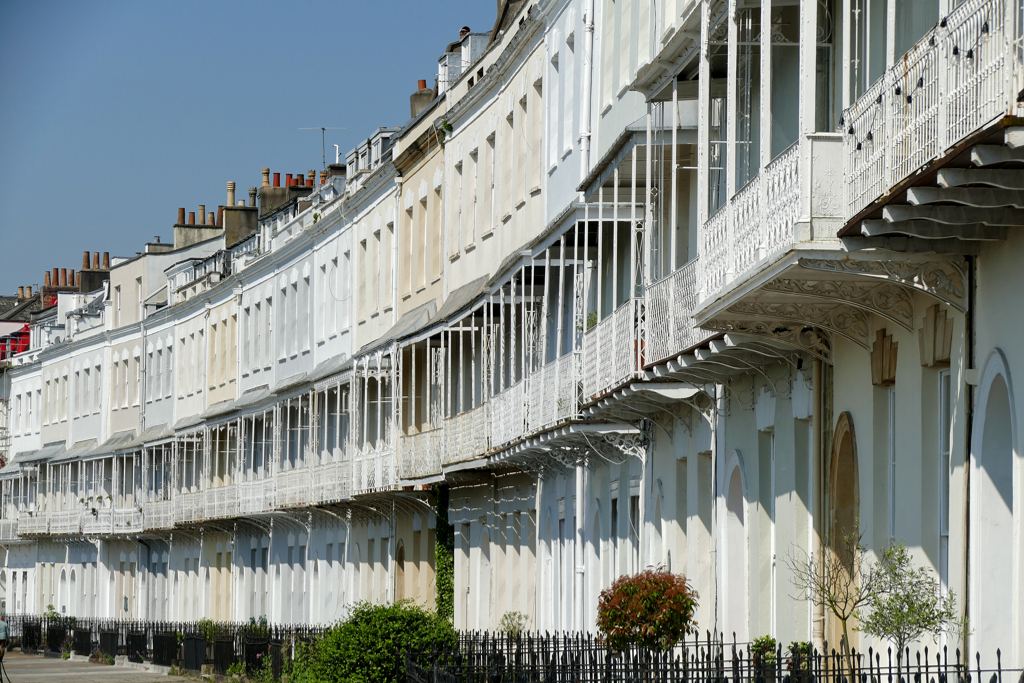
The district is known for its stunning Georgian and Victorian architecture. The streets are lined with beautiful terraced houses and large crescents. Elegant squares will beam you right back to the 18th and 19th centuries.
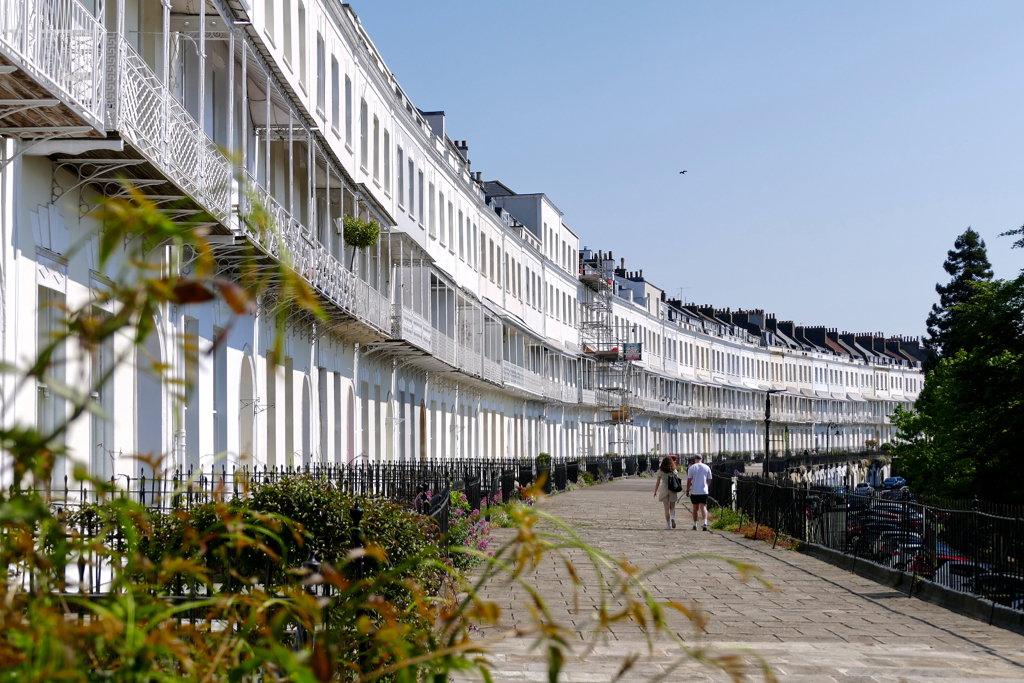
While Clifton feels like a quiet retreat, it is still conveniently located close to the city center. If you’re reasonably fit, you can walk to Clifton in about 20 minutes. However, coming from the city center, you’ll be walking uphill most of the time, just sayin’.
No Backwater
Clifton has several beautiful parks and green spaces. The Clifton Downs, with its expansive meadows and panoramic views, are perfect for picnics, walks, and outdoor sports. Brandon Hill, on the other hand, is home to the historic Cabot Tower and offers breathtaking views of the city.
The main streets are dotted with independent boutiques, quirky shops, vintage finds, artisan cafes, and cozy pubs, giving it a unique and friendly character. Foodies will definitely get their money’s worth in Clifton. The area offers a wide range of dining options with an obvious emphasis on the quality of the ingredients used.

No mention of Clifton would be complete without highlighting the iconic Clifton Suspension Bridge. Designed by Isambard Kingdom Brunel, it spans the Avon Gorge and offers breathtaking views of the surrounding countryside. It is cherished as a symbol of Bristol’s rich industrial heritage.

Brunel, however, was also the mastermind behind the SS Great Britain, which I introduced above as it is docked in the Floating Harbor of Bristol. Another of Brunel’s engineering marvels is the Brunel Tunnel in Rotherhithe on the southern outskirts of London. I featured it in my post LONDON – Off the Beaten Path.
In summary, Clifton is a great mix of historic elegance, cultural richness, and modern vibrancy. Its stunning architecture, scenic beauty, and vibrant community make it an outstanding part of Bristol, enchanting visitors and residents alike with its unique appeal.
Around North Street
If you’re not interested in street art, you’ve probably never heard of North Street. That’s not a problem, because if you’re not interested in street art, you might as well skip visiting this area, anyway. Because honestly, everything North Street offers visitors other than fantastic street art can also be found in other parts of the city that are more conveniently located.
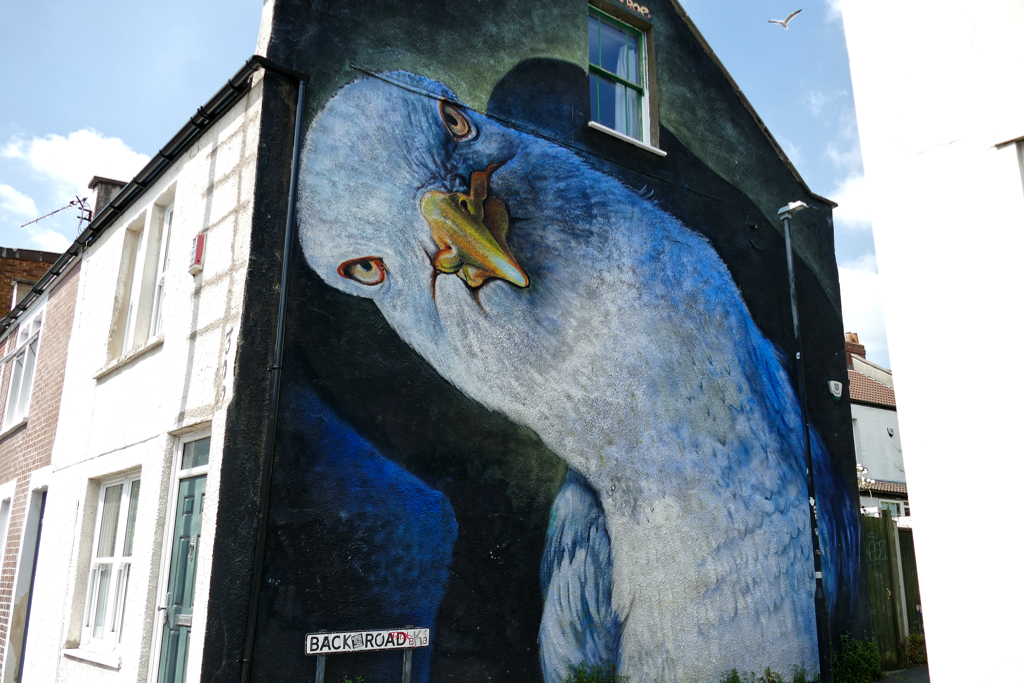
However, if you are interested in street art, then North Street is an area you definitely shouldn’t miss!
Like many neighborhoods with a high concentration of street art, North Street was traditionally a working-class neighborhood. Due to local heavy industry, there was dense housing, and shops’n’pubs catered to blue-collar and factory workers.

A transformation of the area began with the introduction of street art. In 2008, the so-called Upfest brought a boost of cultural activities to the area. Since then, muralists from all over the world have transformed the area into an open-air gallery.
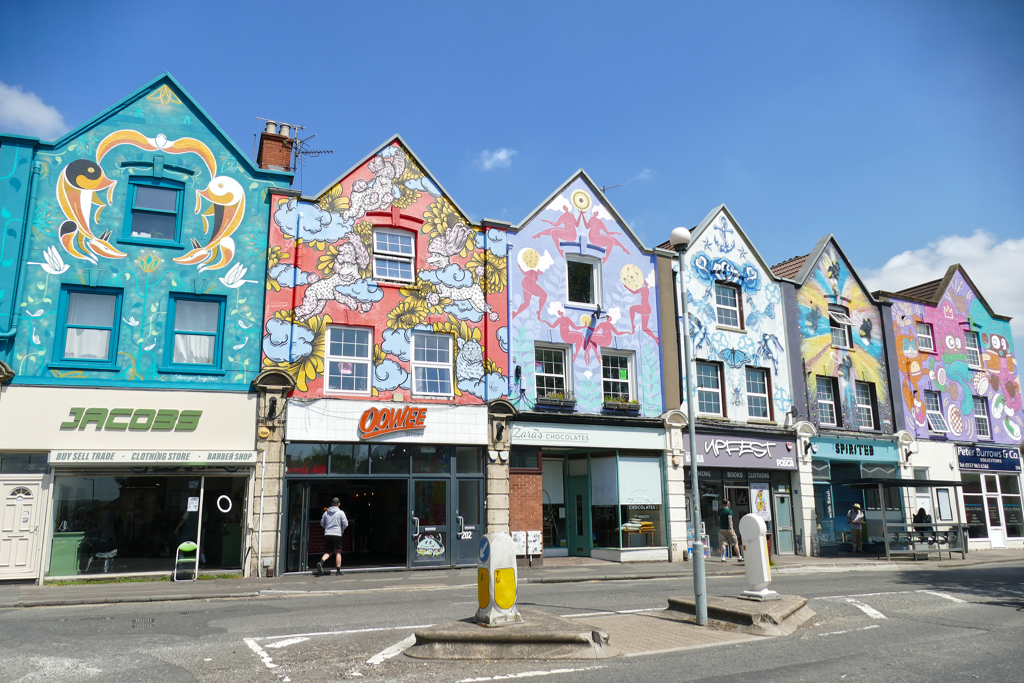
As the street art scene flourished, so did the local economy. New shops, cafés, and bars opened. These eateries, grocery stores, bookstores, and other shops are still independent and run their business considerately. Nevertheless, the growing number of trendy establishments attracts new demographics. This further pushes the gentrification of the area, obviously. However, there is a fundamentally inclusive community spirit in Bristol, so there is hope for thoughtful coexistence.

As I explained above, urban art remains just one of the various colorful sides of Bristol. Therefore, I’ll leave it at this short introduction. In my detailed post Best Street Art in BRISTOL – Part II: North Street, you will find many works and detailed introductions of the artists.
My Tip
North Street is a bit off to the southwest of the city center. As a matter of fact, this is the direction to the airport. So if you don’t have heavy luggage, you can squeeze in a visit to this area on the way from or to the airport. In the latter case, be sure to plan enough time for your tour, I’d suggest around three hours. It would be really stupid if you missed your flight because you were blinded by Bristol’s street art. Anyway, the so-called Airflyer A1 stops at West Street every ten to twenty minutes, from where it will take you to the airport in just twenty minutes.
Practical Information
How to Get There
Air Travel
Just like I underestimated the size of Bristol, I totally misjudged the size of its airport. Actually, I was surprised that Bristol had an airport at all. Then, I expected it to be an airstrip in the middle of a paddock.
But I stand corrected: Bristol’s Airport, located at Lulsgate Bottom, is about 13 kilometers southwest of the city center. It is in fact the eighth busiest airport in the United Kingdom, served mostly by EasyJet and RyanAir. However, there are three scheduled flights between Amsterdam and Bristol operated by KLM, and according to my experience, this is a hot mess!
KLM canceled my outbound flight 45 minutes before the scheduled departure by sending me a brief Email, rescheduling my flight 48 hours later. Just to be clear: 48 hours equals two long days! I still wonder, what were they thinking? Finally, they sent me the following day crisscross Europe before I finally made it home.
My conclusion: Never again!
This being said, I have rarely experienced an airport being reached so quickly and so reliably. The Airflyer A1, which absolutely lives up to its name, runs around the clock and roughly every 15 minutes during the day. At night, only about every hour, obviously. Howsoever, I would argue there is no reason to take a cab. According to their website, a one-way trip costs £9, although only £7 was charged to my card, no idea why. A round trip costs £15, but the return trip must be made within a month.
Just for the record: There are other Airflyers that go to Weston or Bath, for example.
Land Travel
If you are already in the United Kingdom, trains are the best travel option. Bristol has two main railway stations, Bristol Temple Meads and Bristol Parkway. From these stations, there are regular and fast connections to many important cities in the country. For instance, there are direct trains from Bristol Temple Meads to London Paddington and Birmingham New Street, and the journey takes normally only about 90 minutes. Even Edinburgh is reached in only 5 to 6 hours. These great connections make Bristol an important transport hub.
This being said, I need to point out that I’ve taken the train quite a few times in Great Britain and unfortunately experienced major disruptions more than once. I’m talking about hours spent between fields and meadows in the middle of nowhere. Therefore, if for instance, you have a plane to catch, I would not travel anywhere by train that very day.
The connection from Bristol with intercity buses is also very good. There is an extensive bus network operated by various providers. The Bristol Bus & Coach Station is located in the city center.
From there, there are regular connections to London and Birmingham with the
National Express or Megabus. The journey takes around 2 to 3 hours, a trip to Manchester around 4 to 5 hours. Also, regional bus companies provide services to smaller towns surrounding Bristol, as well as tourist destinations such as Bath and Glastonbury.
There are also direct buses to London’s Heathrow and Gatwick airports. According to plan, it takes 2 to 3 hours to Heathrow and 3 to 4 hours to Gatwick. Personally, I would allow at least one to two hours extra.
How to Get Around
It depends a bit on what you are planning on doing. If you want to stay in the very center of the city, walking is definitely an option. Yet, Bristol has a comprehensive net of public buses that take you everywhere at a relatively reasonable fare.
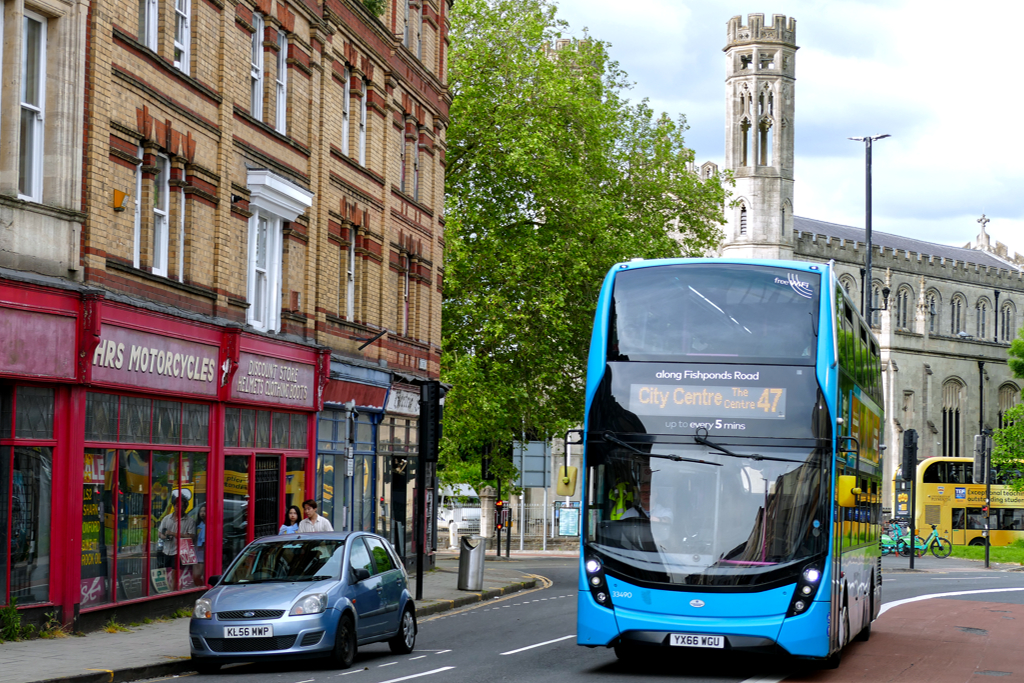
A one-way bus journey in Bristol costs £ 2, a two-trip ticket £ 3.80, three tips £ 5.80, and a so-called day-rider £ 6. Also, capping three or more consecutive days makes your travel cheaper. If you pay with your NFC-equipped credit or debit card, the system automatically adds the trips in a way that you always pay the cheapest price.
You’ll find further info on the bus company’s website.
You can find out all the transport connections on Google Maps, simply enter the start and destination and let the app do the magic.
Cycling
I would like to emphasize again that Bristol was Britain’s first cycling city. Cycling is an environmentally friendly way to get around the city and is in line with Bristol’s commitment to sustainability. Bristol has a growing network of cycle paths.
Cycling allows visitors to explore Bristol’s attractions such as the Clifton Suspension Bridge, the harbor, and historic streets at their own pace.
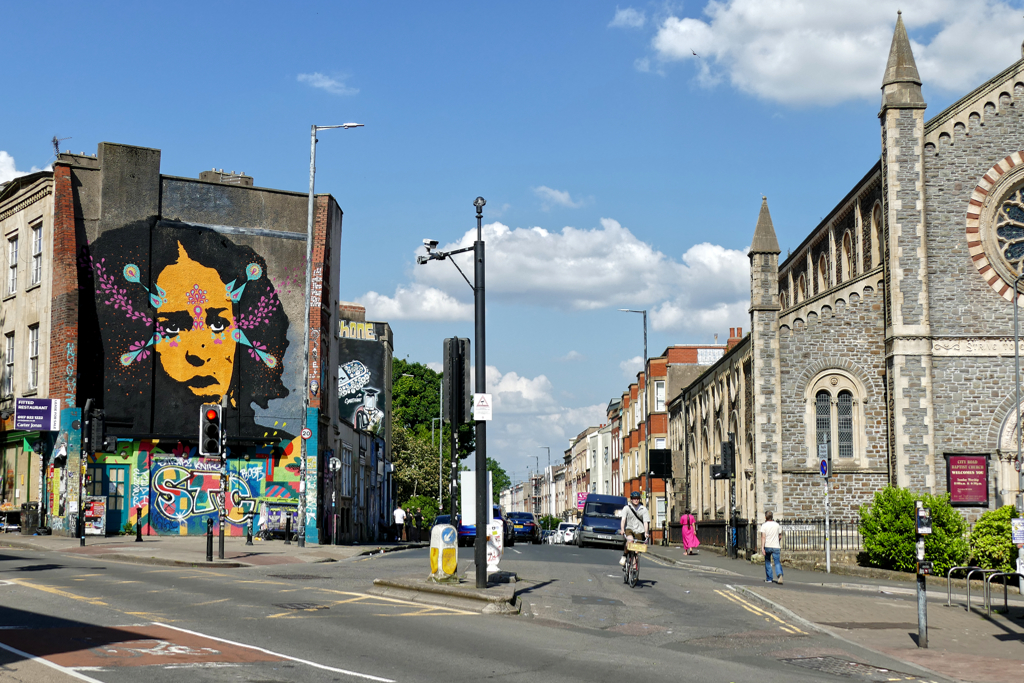
You can rent electric scooters and bicycles from WESTscoot and WESTbike, for example.
They are a good option for the casual riders. Simply find the next available e-scooter or e-bike using the app, hop on, and ride off. At your designated destination, you can dismount and park safely in an approved location.
When paying per ride, for both e-scooters and e-bikes you pay £ 0.99 to unlock and £ 0.16 per minute thereafter. For detailed information, it’s best to go to their website. There you will also find links to the app, which allows you to easily rent and pay.
If you don’t want to cycle alone, you’ll find several companies offering guided bike tours to Bristol’s most important landmarks.
Where to Stay
As basically everywhere in Great Britain, accommodation in Bristol is not exactly cheap. Therefore, on this map, you can choose convenient lodging options according to your budget and favorite location in Bristol**:
What to Eat
In general, England is not exactly known for its sophisticated cuisine. In fact, the staple diets are largely based on what the working-class heroes ate to complete their daily tasks. This starts with a so-called Full English Breakfast. It’s made with ingredients that would give any cardiologist a heart attack: fried eggs, fried sausage, fried bacon, fried ham, baked beans, fried tomatoes, fried mushrooms, and all this topped with a slice of black pudding.
But guilty as charged: I eat at least one of these killer dishes every time I visit Great Britain.
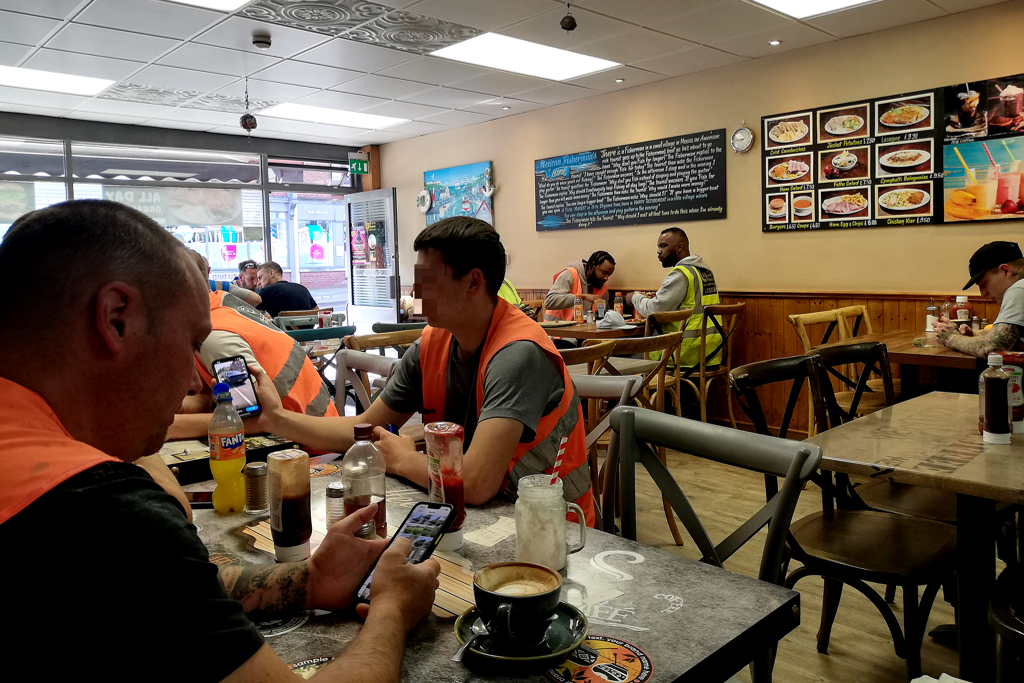
But that’s about it and I strive to give my body at least a minimum of vitamins, minerals, and all that good stuff. And Bristol has helped me in an unexpected way, as it is a veritable smorgasbord of culinary wonders that will make your taste buds dance with joy!
I was really impressed by the range from innovative plant-based dishes to delicious seafood. Particularly the chefs’ willingness to experiment and most of all the quality of the ingredients impressed me a lot! Here, the farm-to-table movement isn’t just impacting upscale hipster eateries. No, many of Bristol’s restaurants take great pride in sourcing the freshest produce from local farms. This means every bite is full of flavor and quality.
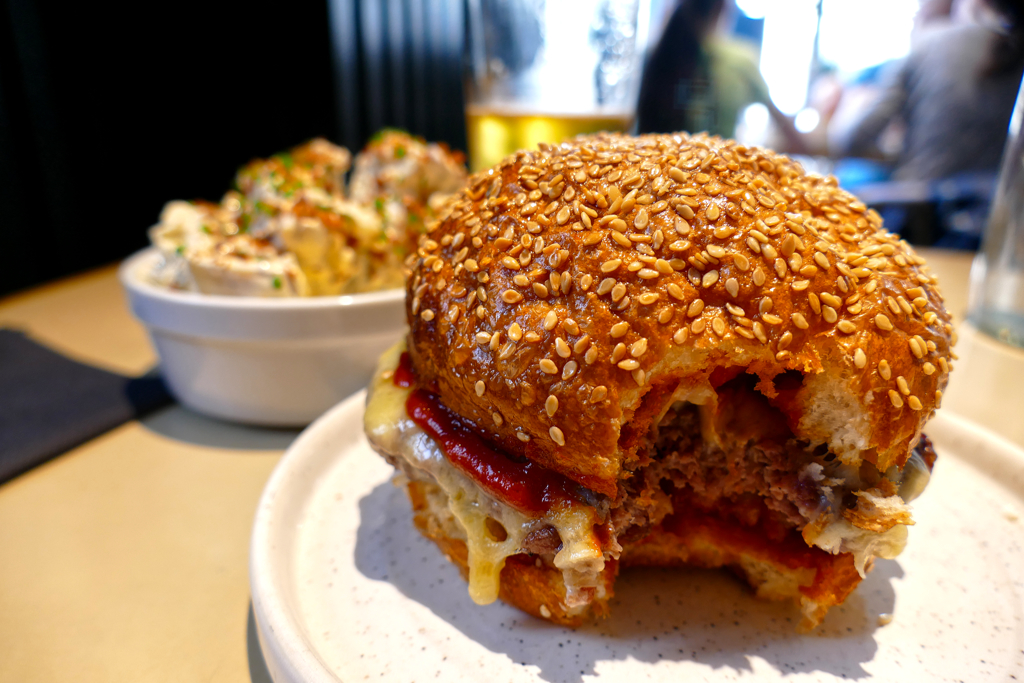
Another culinary aspect is the city’s lively street food culture. You can stroll through St. Nicholas Market and enjoy everything from tempting tacos to delicious Korean BBQ. The stalls are a melting pot of flavors and cultures, each dish prepared with passion and creativity.
But let’s also not forget the city’s emerging craft beer pubs and cocktail bars.
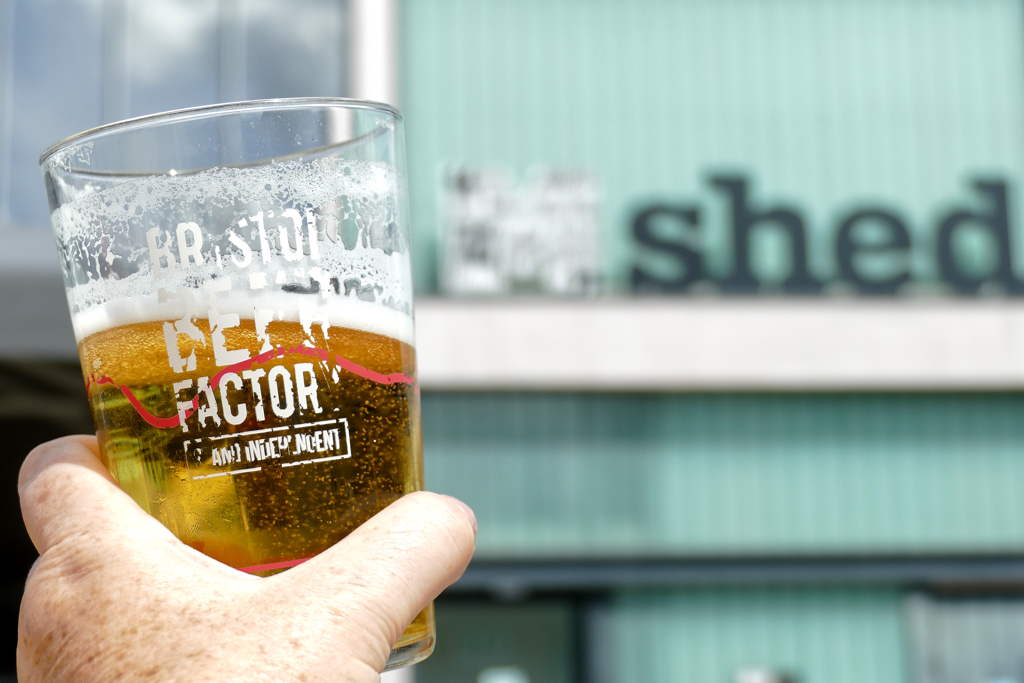
In short, Bristol’s food scene is a wonderful adventure for anyone who loves to eat. You won’t have any trouble recharging your batteries in one of Bristol’s wonderful restaurants after an extensive city tour.
My Tip
If you don’t feel like spending a long time in a restaurant and just want to grab a snack while sightseeing, the last resort for a quick and filling meal is supermarkets and refrigerated sections at drugstores like Boots. Here you will find a selection of pre-packaged sandwiches, yoghurts, and other snacks. Often three items can be combined into a so-called meal deal.
No, this won’t be the fanciest meal during your stay in Bristol, but it’s a quick alternative if you’re hungry and don’t have time for a regular meal.
Cash And Cards
Sterling is the world’s oldest currency that has been in continuous use since its inception. It is the currency not only of the United Kingdom but also of nine of its associated territories.
The term Sterling refers to the currency as a whole. It is divided into Pounds and Pennies. The exchange rate is 1 US$ = 0,77 GBP respectively 1 €UR = 0,84 GBP as of August 2024, but you can check the conversion on this page.
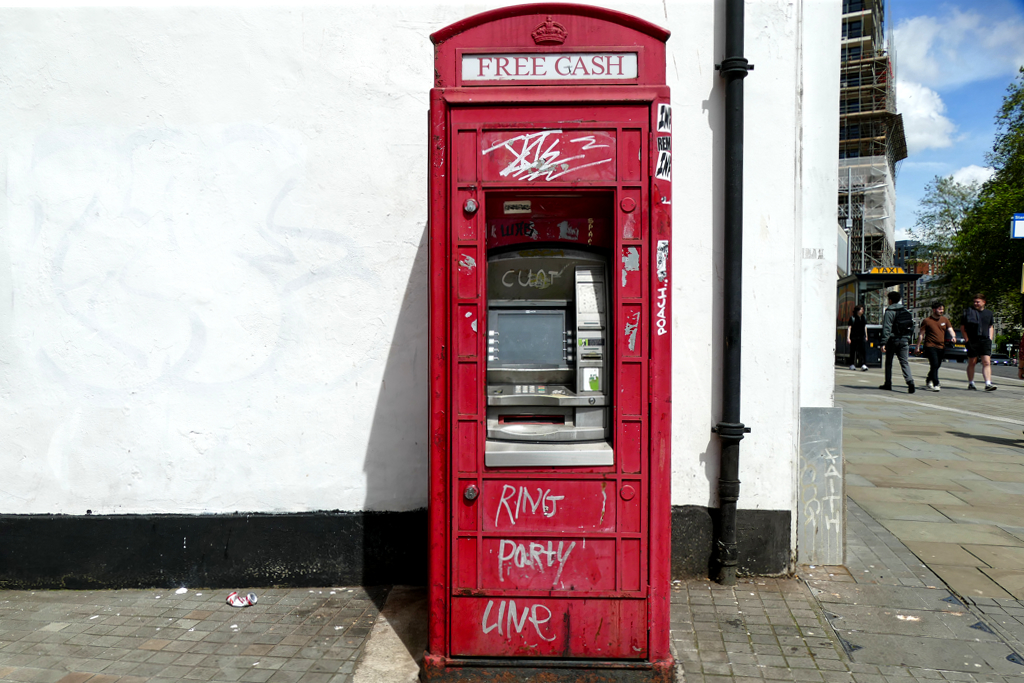
Credit cards are accepted everywhere. Especially if your card is equipped with NFC, you can pay quickly and easily just by tapping your card. As a matter of fact, during three days in Bristol, I didn’t pay cash one single time.
Connection and Communication
Since June 2017, no roaming charges have applied within the EU with a European mobile phone contract. This applies in all 27 countries of the European Union as well as in Iceland, Liechtenstein, Norway, and Great Britain – temporarily even after Brexit.
Obviously, you can connect to the internet without any issue at basically every museum, eatery, or café, and, of course, your hotel.
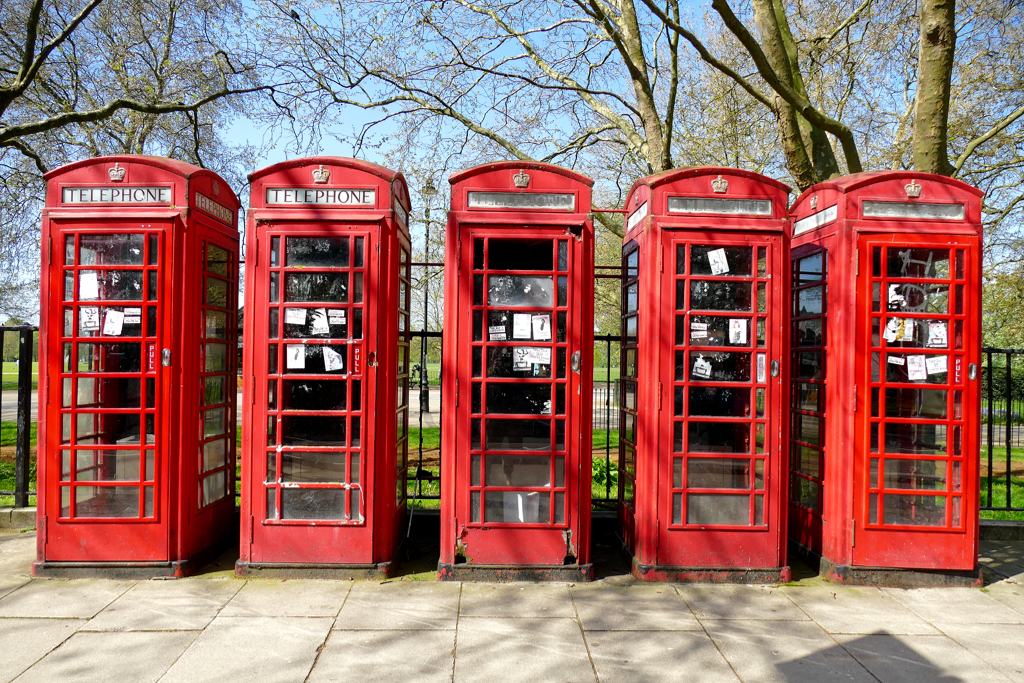
If you insist on being online 24/7, you can get a SIM card, obviously. However, not every card that you buy in the UK will offer free EU roaming! EE and Three UK still offer this service, O2 only on some of their plans, and Vodafone UK doesn’t offer it at all. Hence, if you intend to use your local SIM card also in continental Europe, you have to check your options very thoroughly.
In Great Britain, they use plug type G. Their voltage is 230 V and the frequency 50 Hz. Whereby, since nowadays, all these chargers have integrated adapters, in general, the voltage and frequency don’t really matter.
By the way, you’ll find this information and many more comprehensive travel tips in my post World’s Most Complete Travel Information. It’s an indispensable globetrotter-classic.
Visiting Organized
Although I’m an avid solo-travelling woman, I sometimes like to join organized tours. Not only are they a valid option to go to remote places since I’m not driving.
Therefore, here are some great ideas of what to do when visiting Bristol. Especially during high season, pre-booking online will guarantee your place at the activity of your choice**:
Map
On this map, you can see where to find all the places I’m mentioning in this post. Clicking on the slider symbol at the top left or the full-screen icon at the top right will display the whole map.
Pinnable Pictures
If you choose to pin this post for later, please make sure to use one of these pictures:
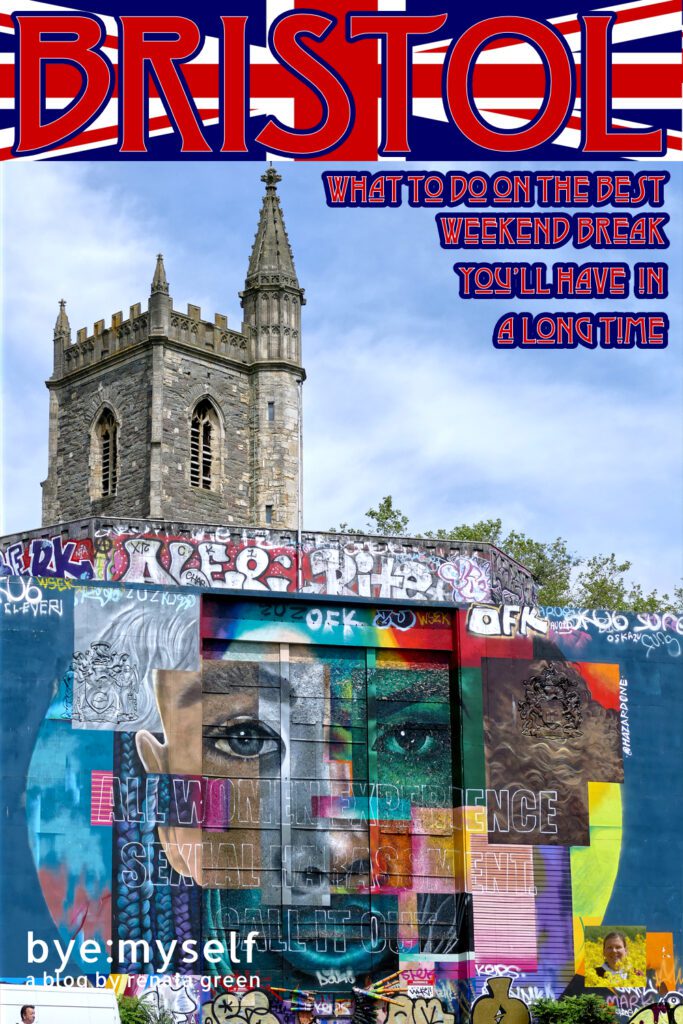
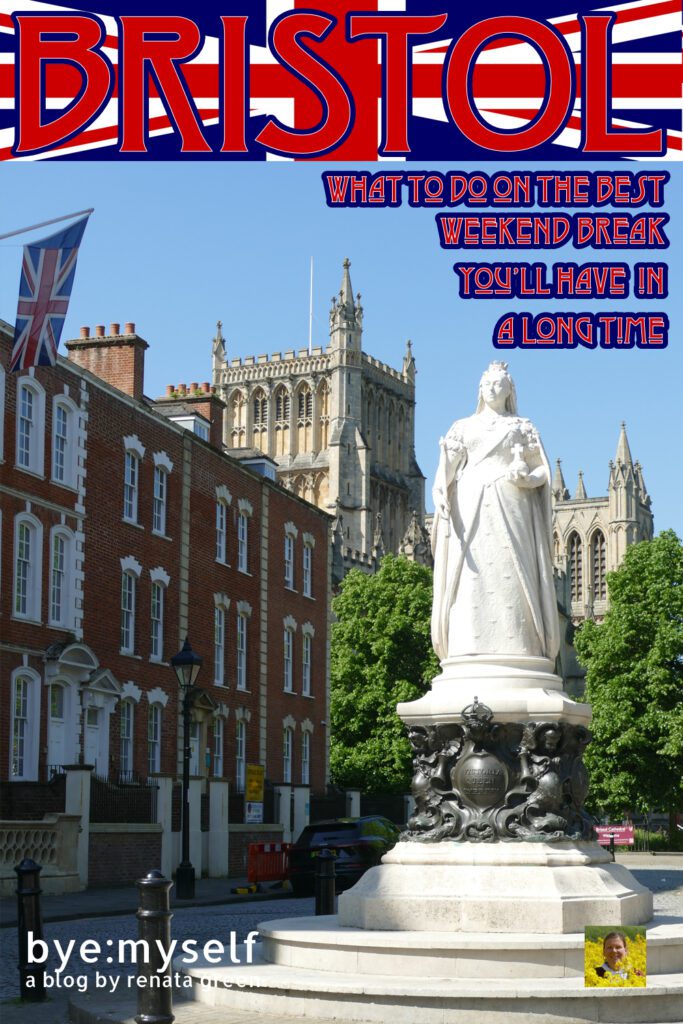
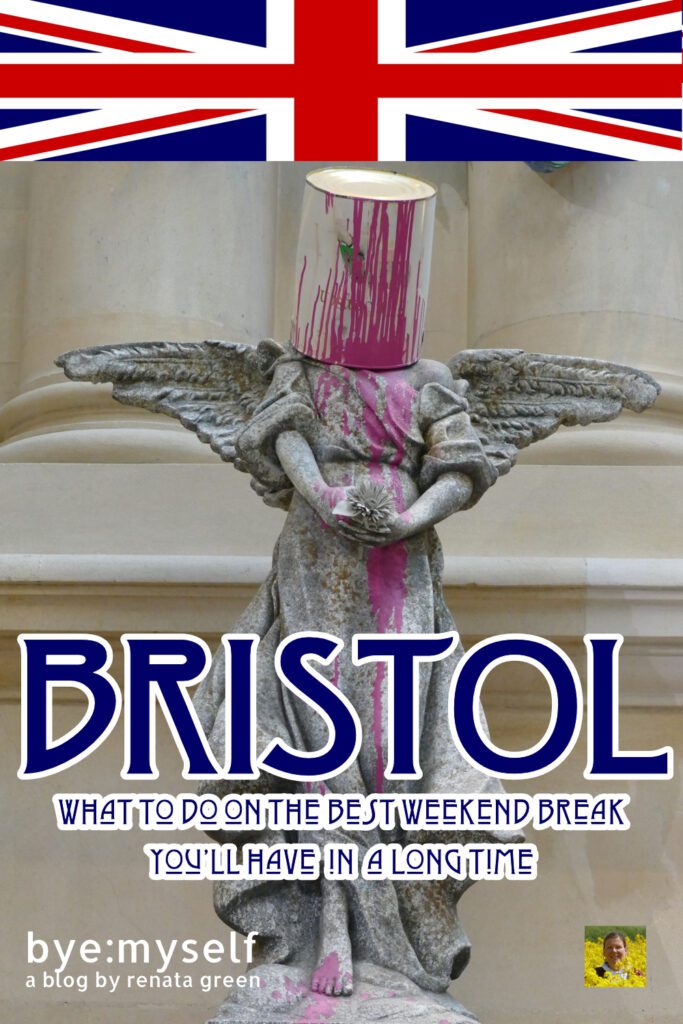
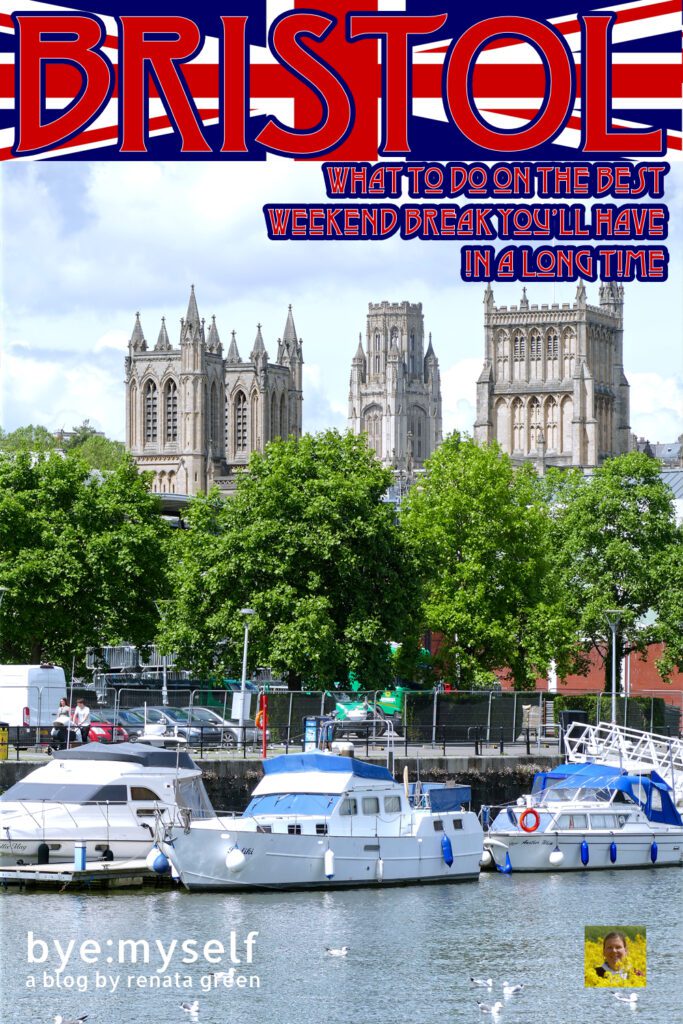

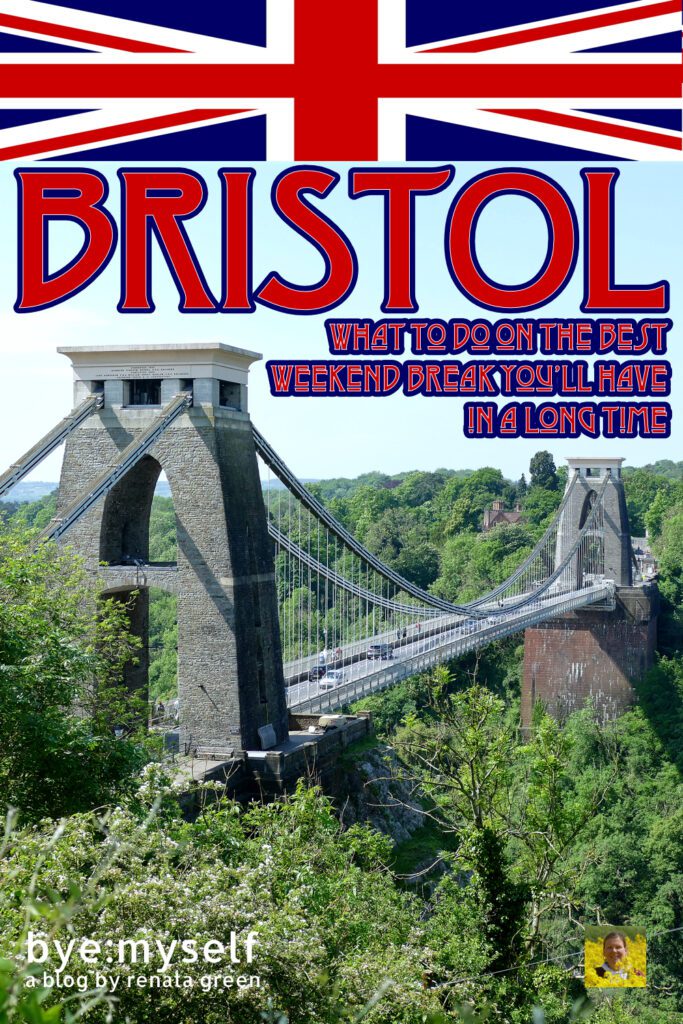
Did You Enjoy This Post? Then You Might Like Also These:
Best Street Art in LONDON – Part I: Camden
Best Street Art in LONDON – Part II: Shoreditch
Best Street Art in BRISTOL – Part I: From Nelson Street to Stokes Croft
LONDON – Off the Beaten Path
Best Street Art in BRISTOL – Part II: North Street
BRISTOL – What to Do on the Best Weekend Break You’ll Have in a Long Time
A Day in BATH, the Most Beautiful Town in All of Britain
24 hours in LONDON
* Disclaimer: I am very appreciative that http://visitwest.co.uk | http://visitbristol.co.uk | http://visitbath.co.uk supplied me with complimentary Media Passes. Nevertheless, the description of all activities as well as opinions on services are mine and were in no way influenced by my cooperation partners.
** This is an affiliate link. Hence, If you book through this page, not only do you get the best deal. I also get a small commission that helps me run this blog. Thank you so much for supporting me!


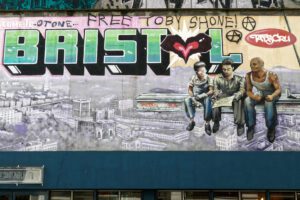
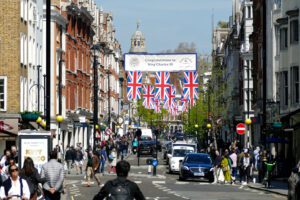
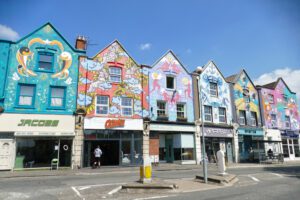
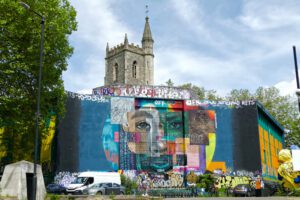
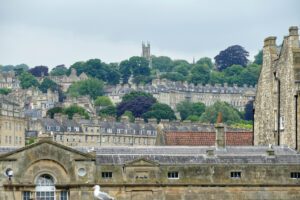
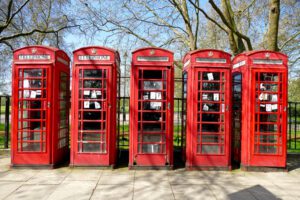
Your blog is a treasure trove of valuable travel tips! Your dedication to your craft is evident in every word you write. Keep up the fantastic work!
Thank you for your kind and encouraging words, Lauretta!